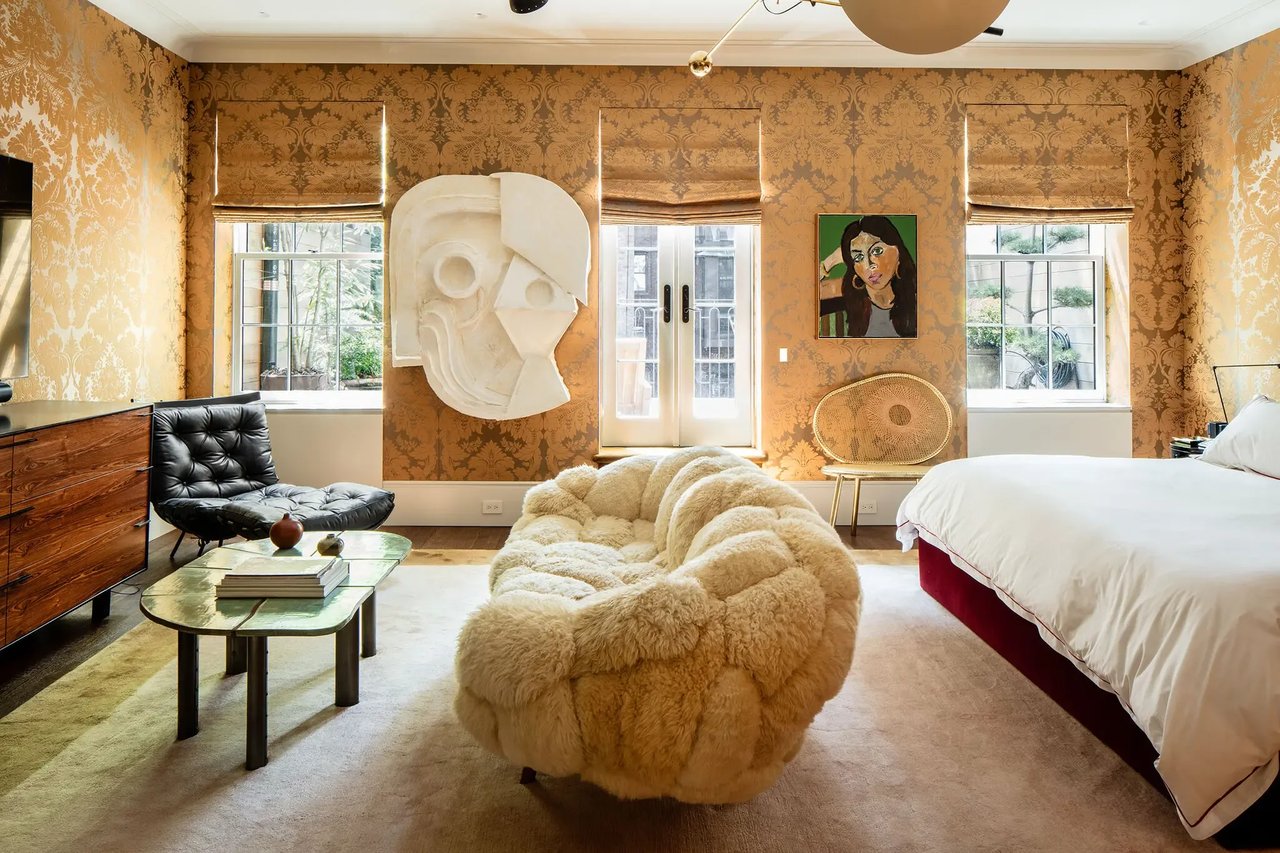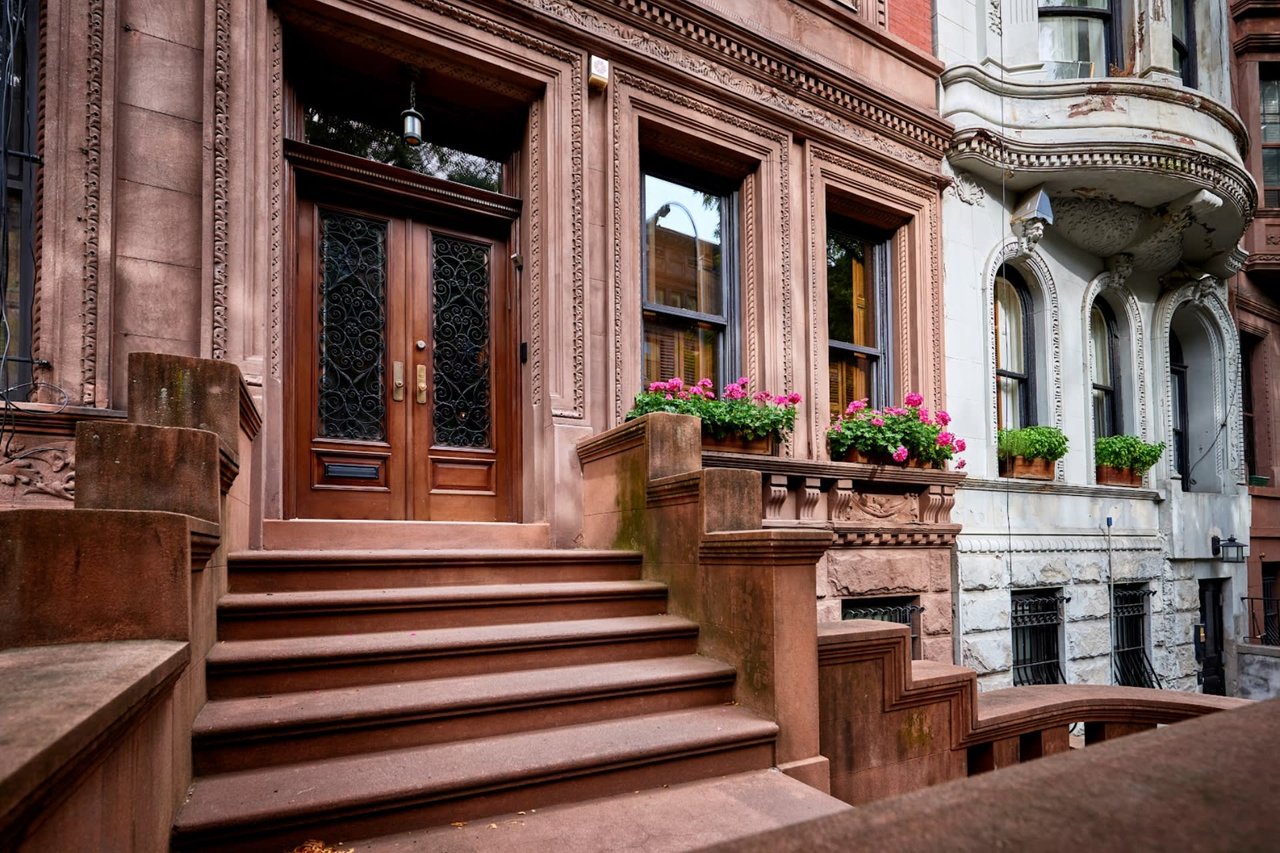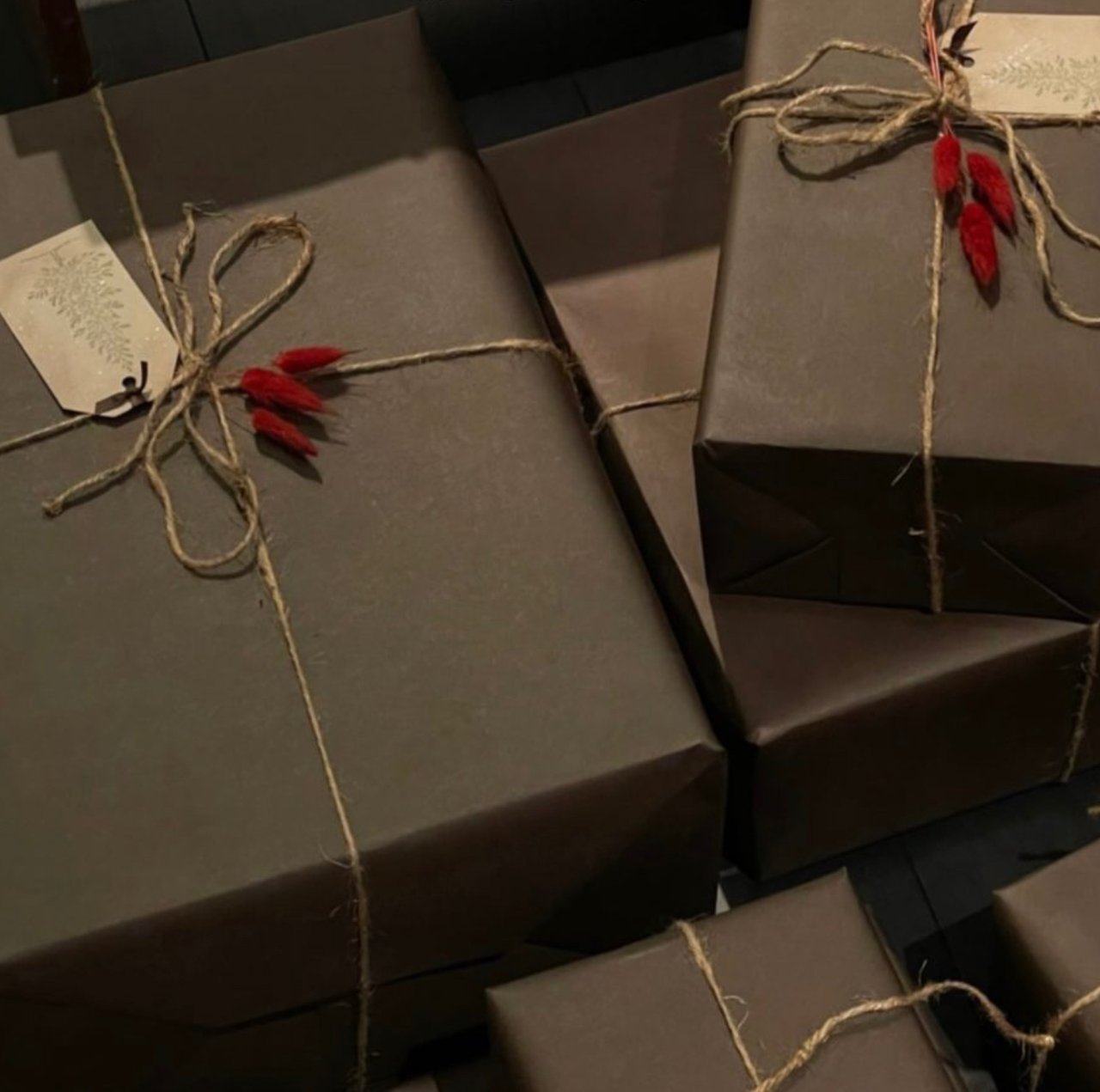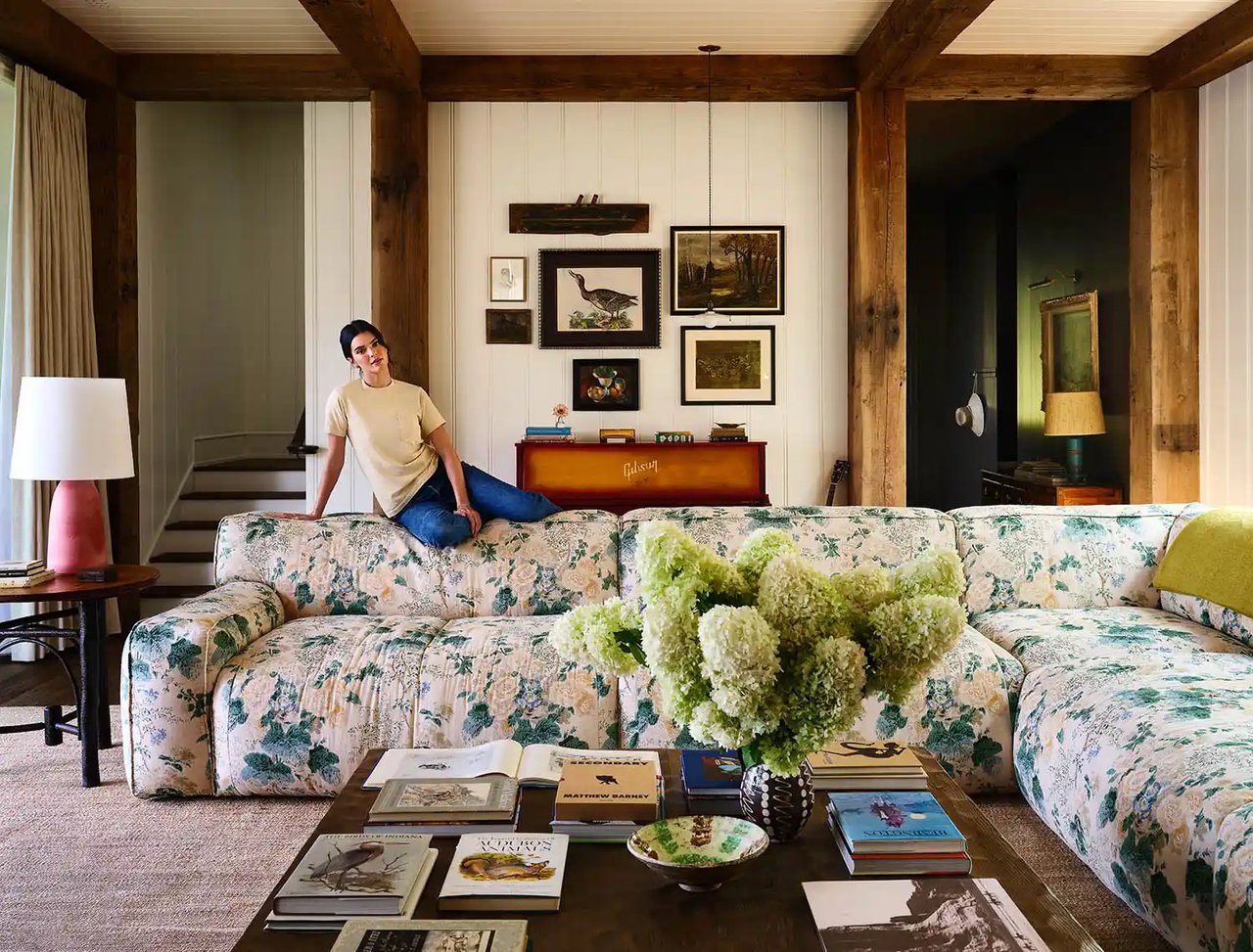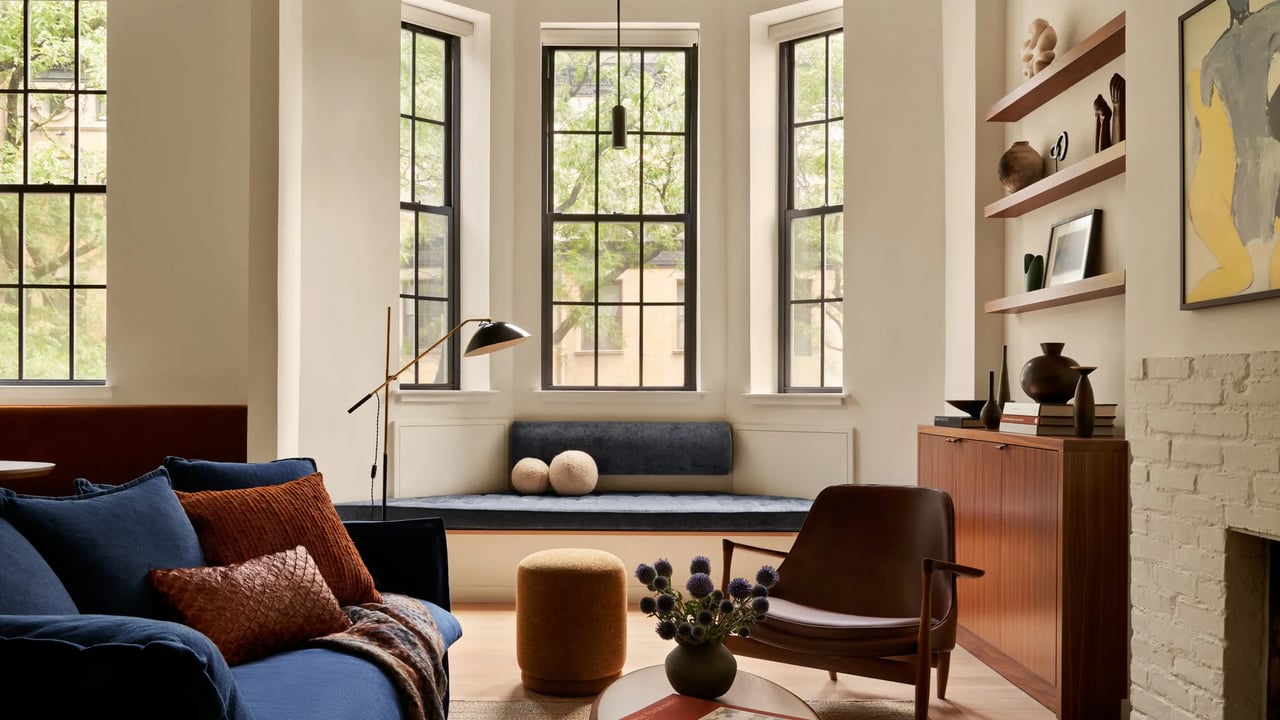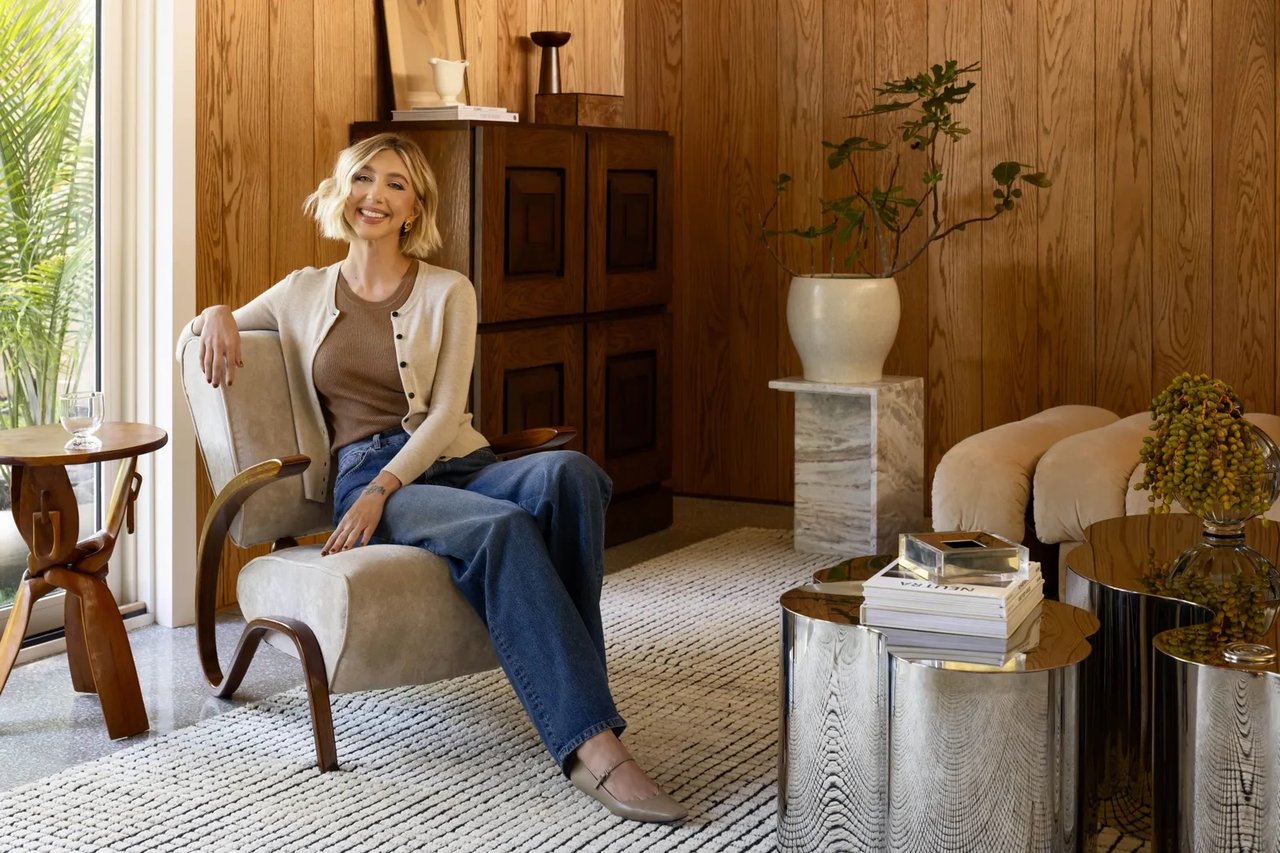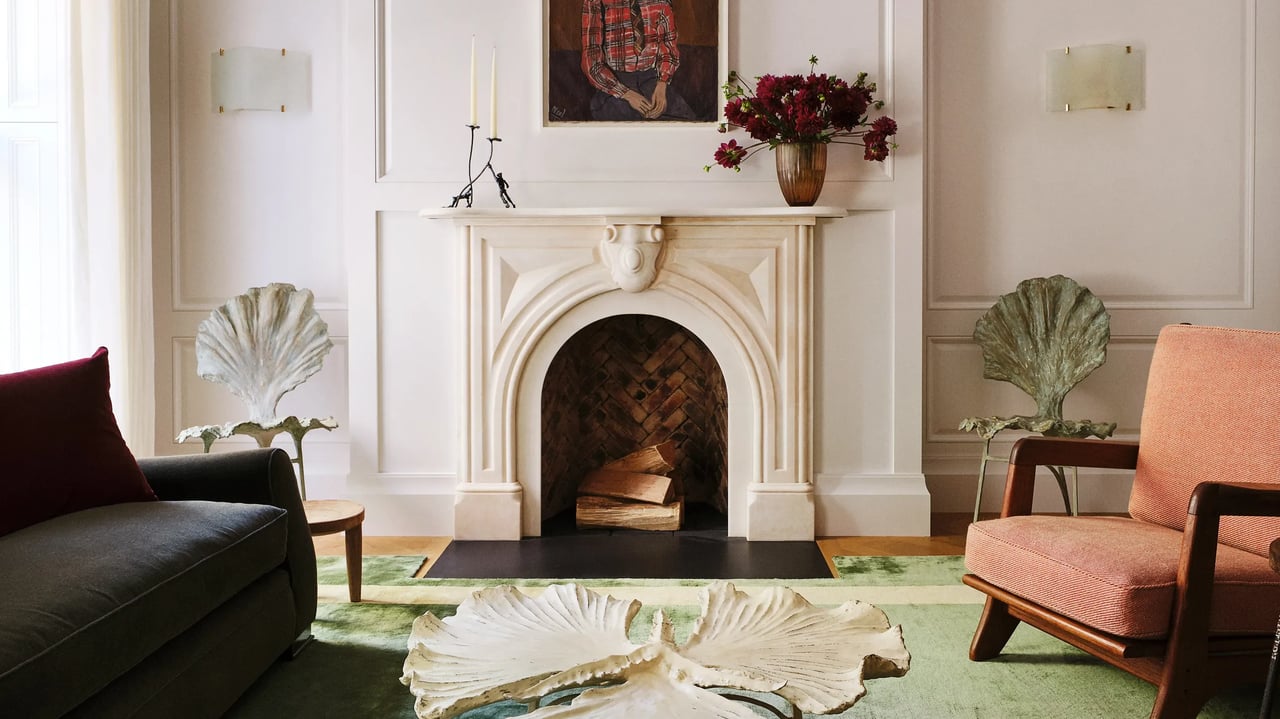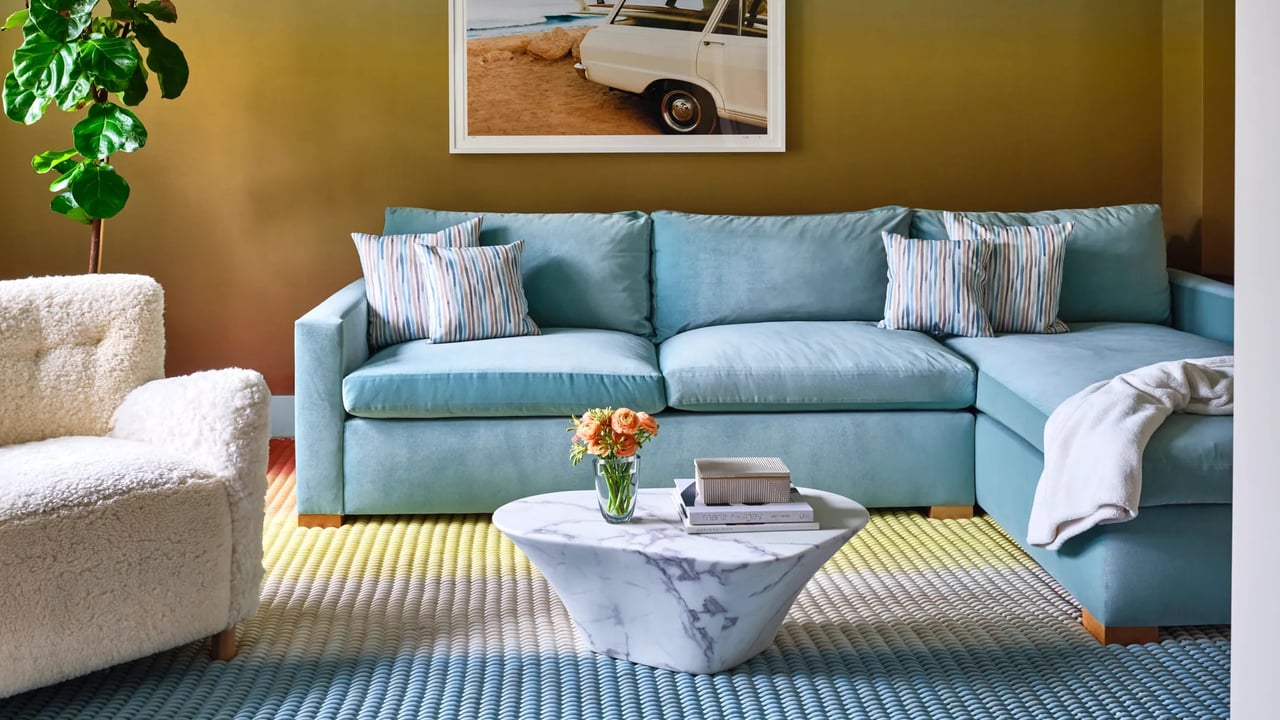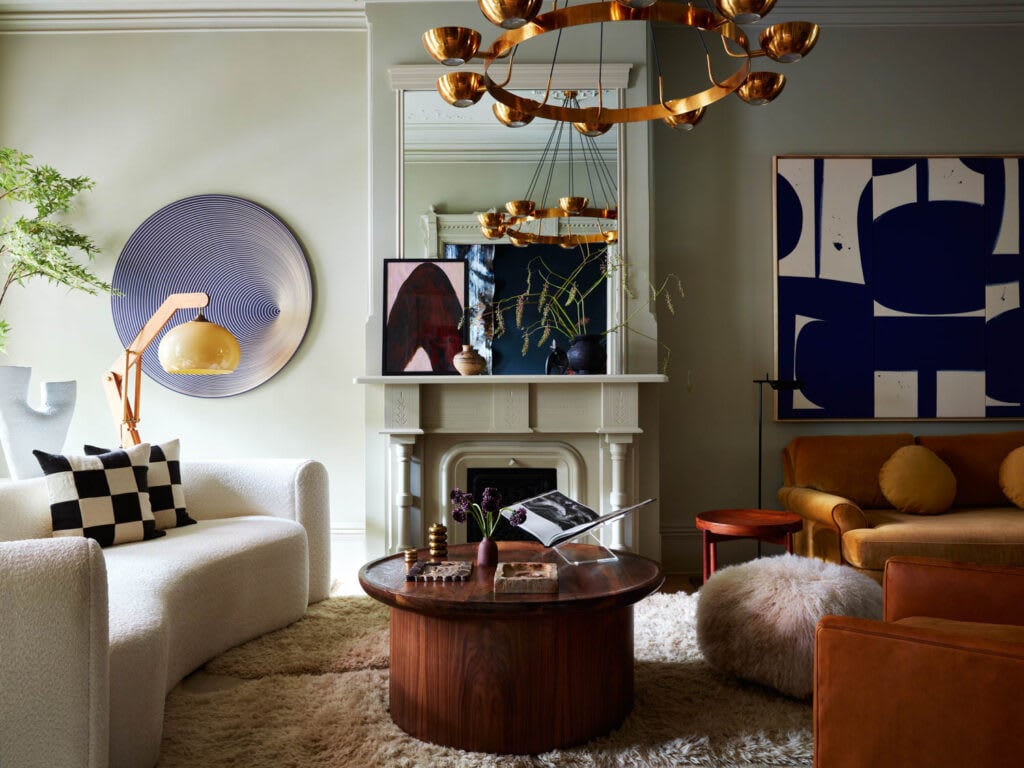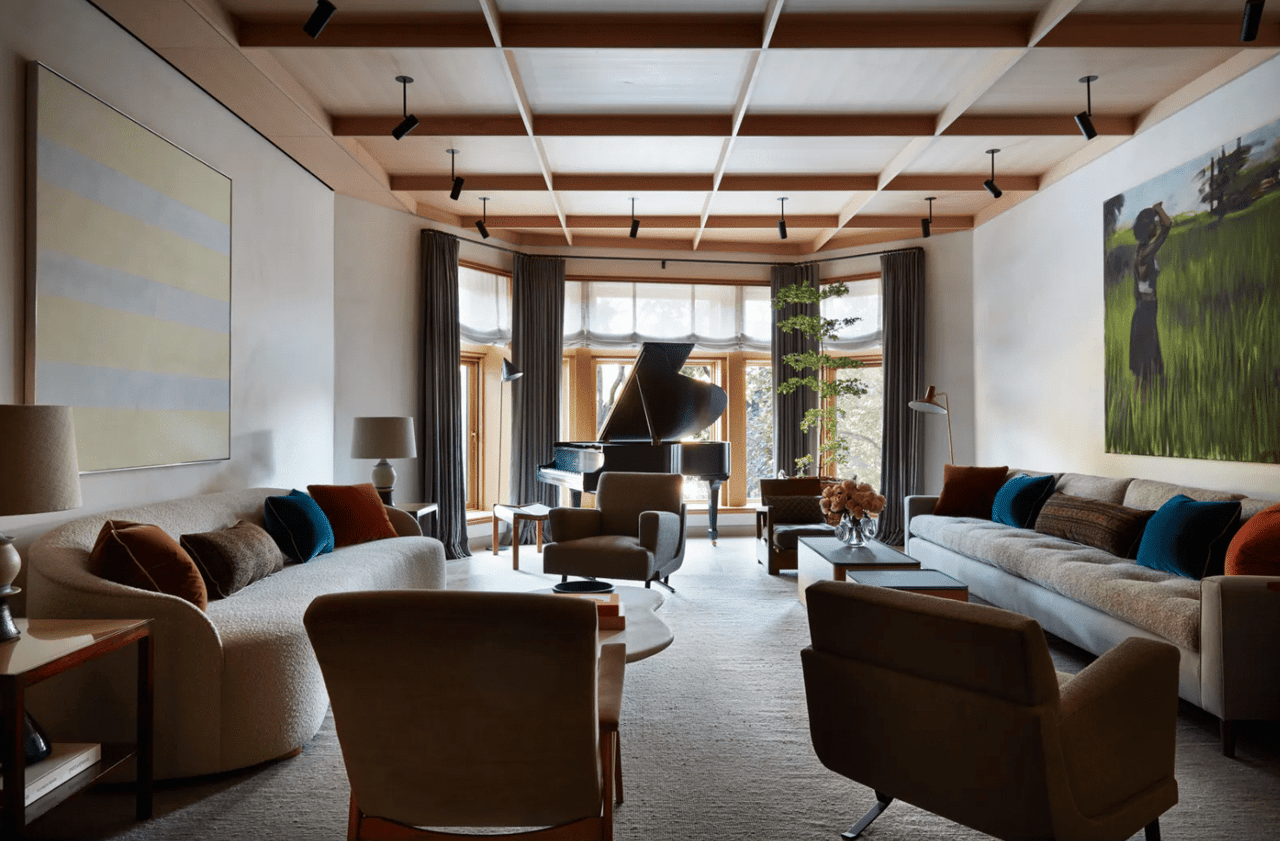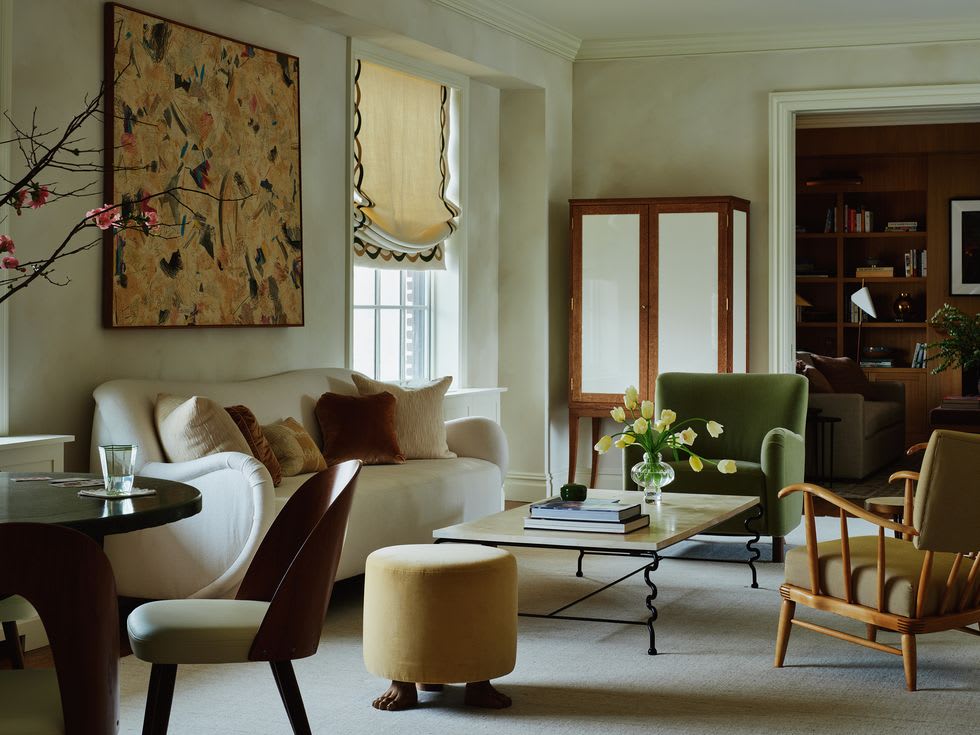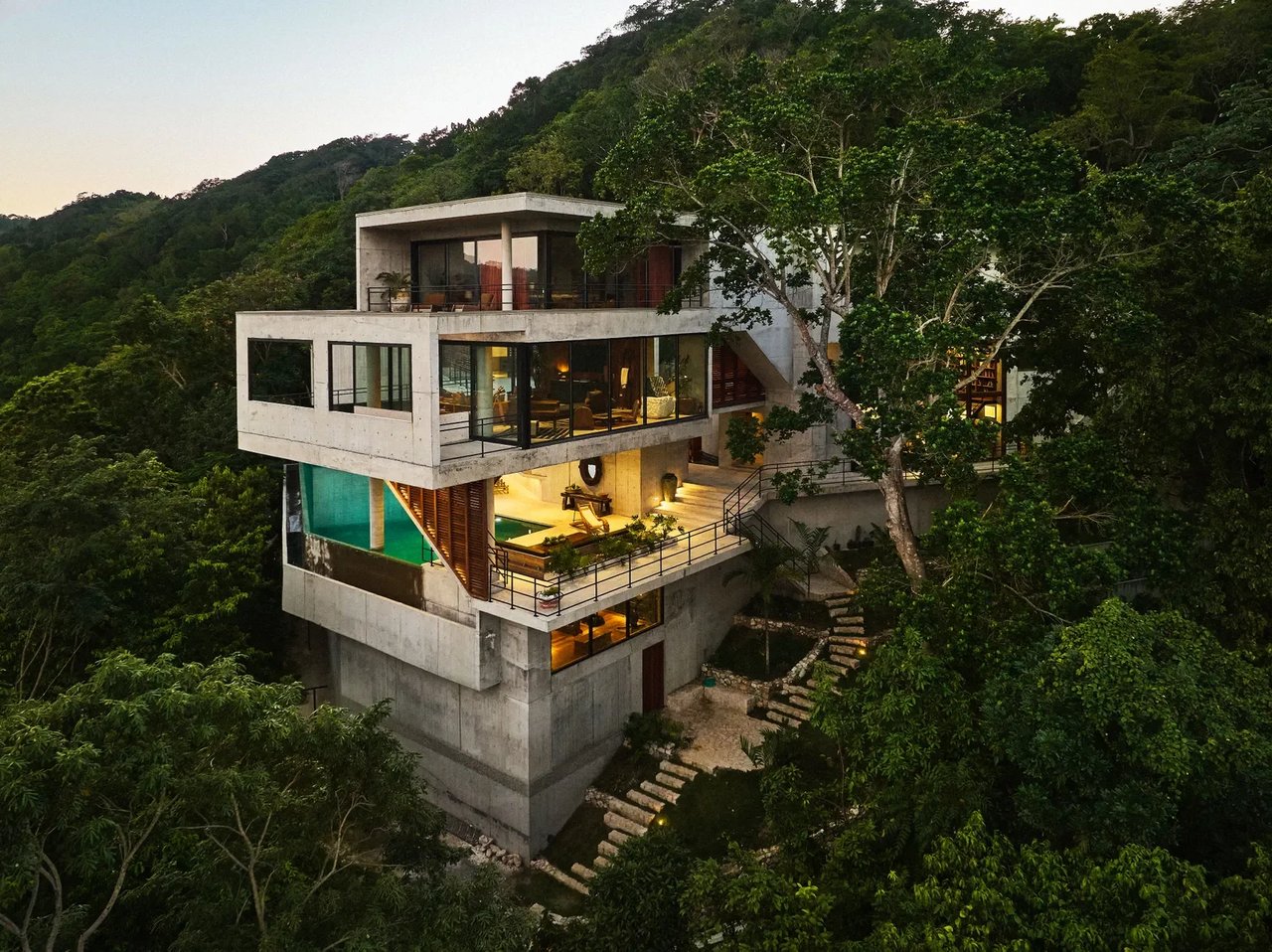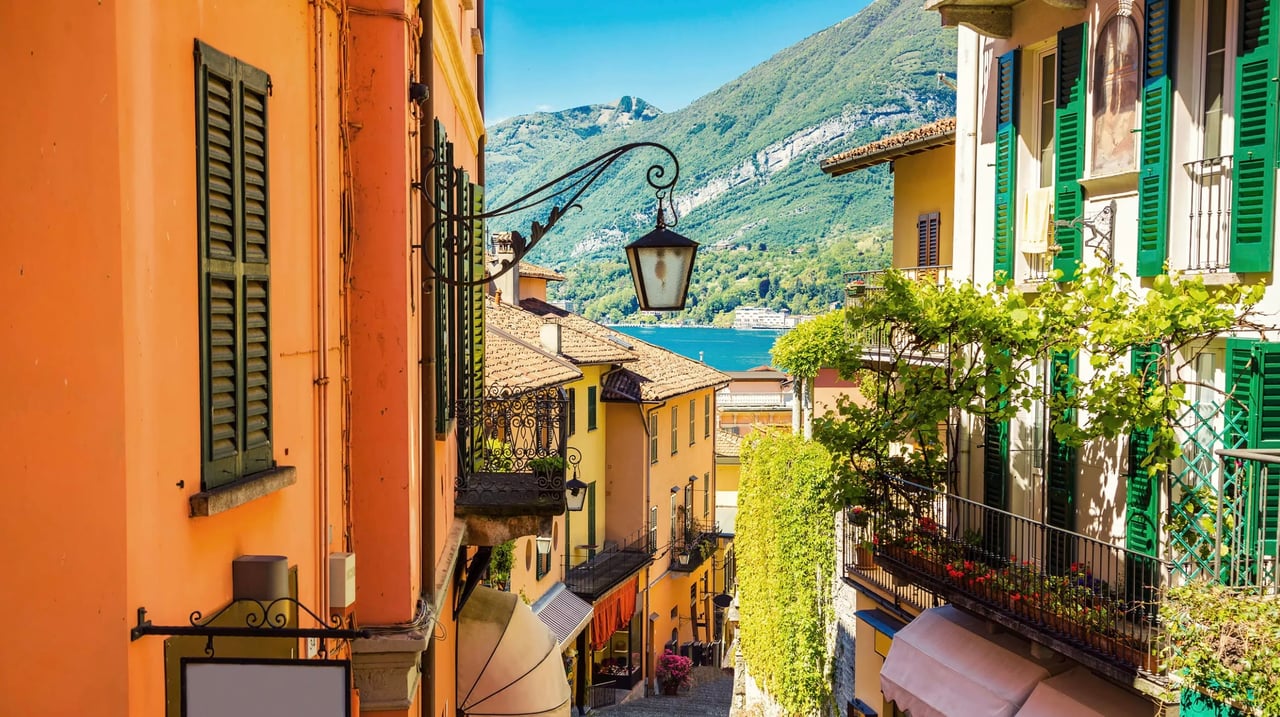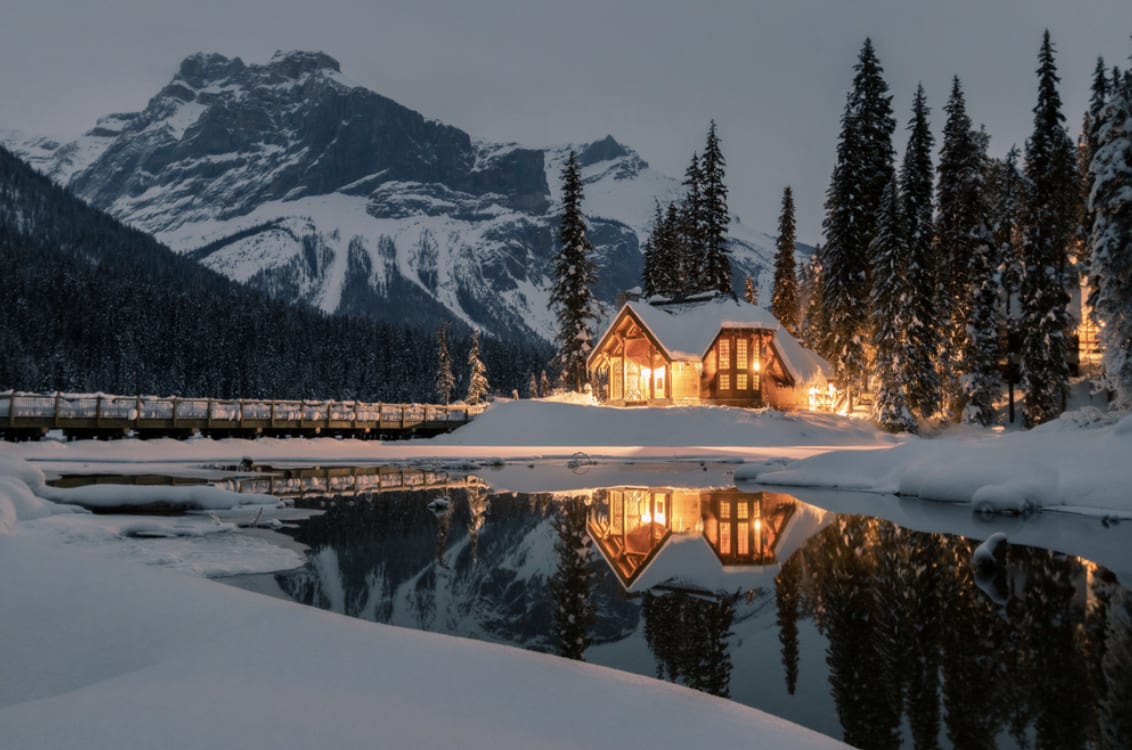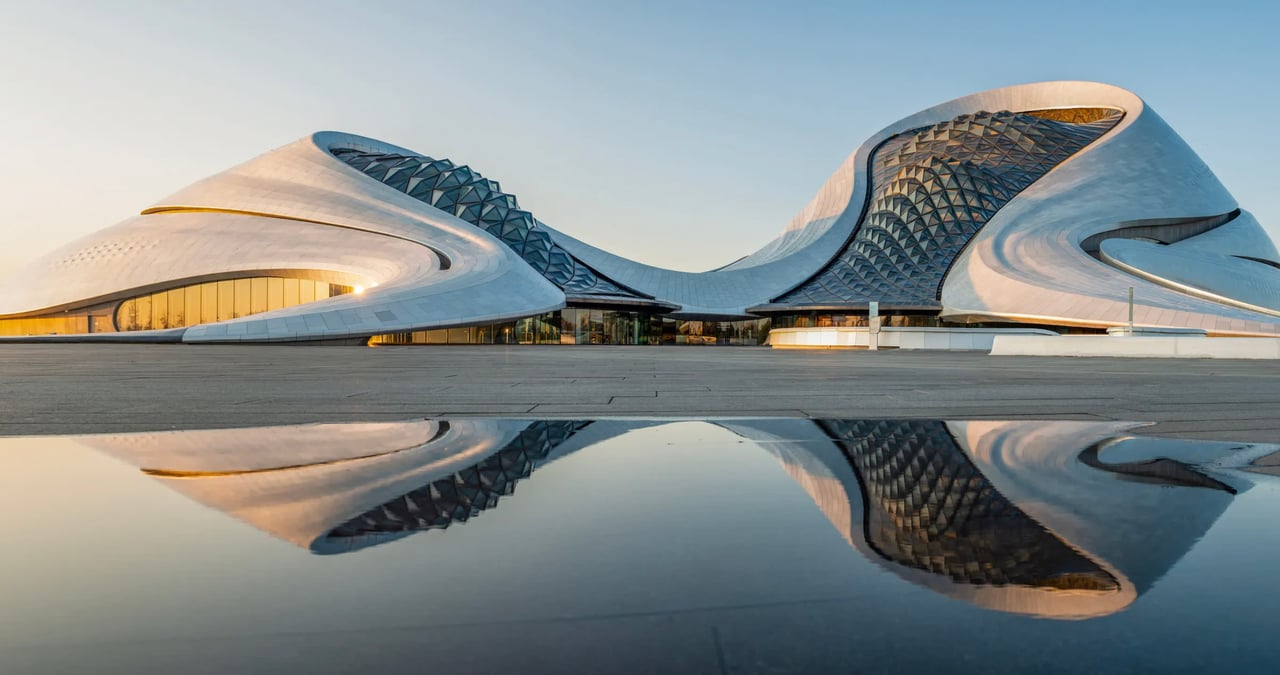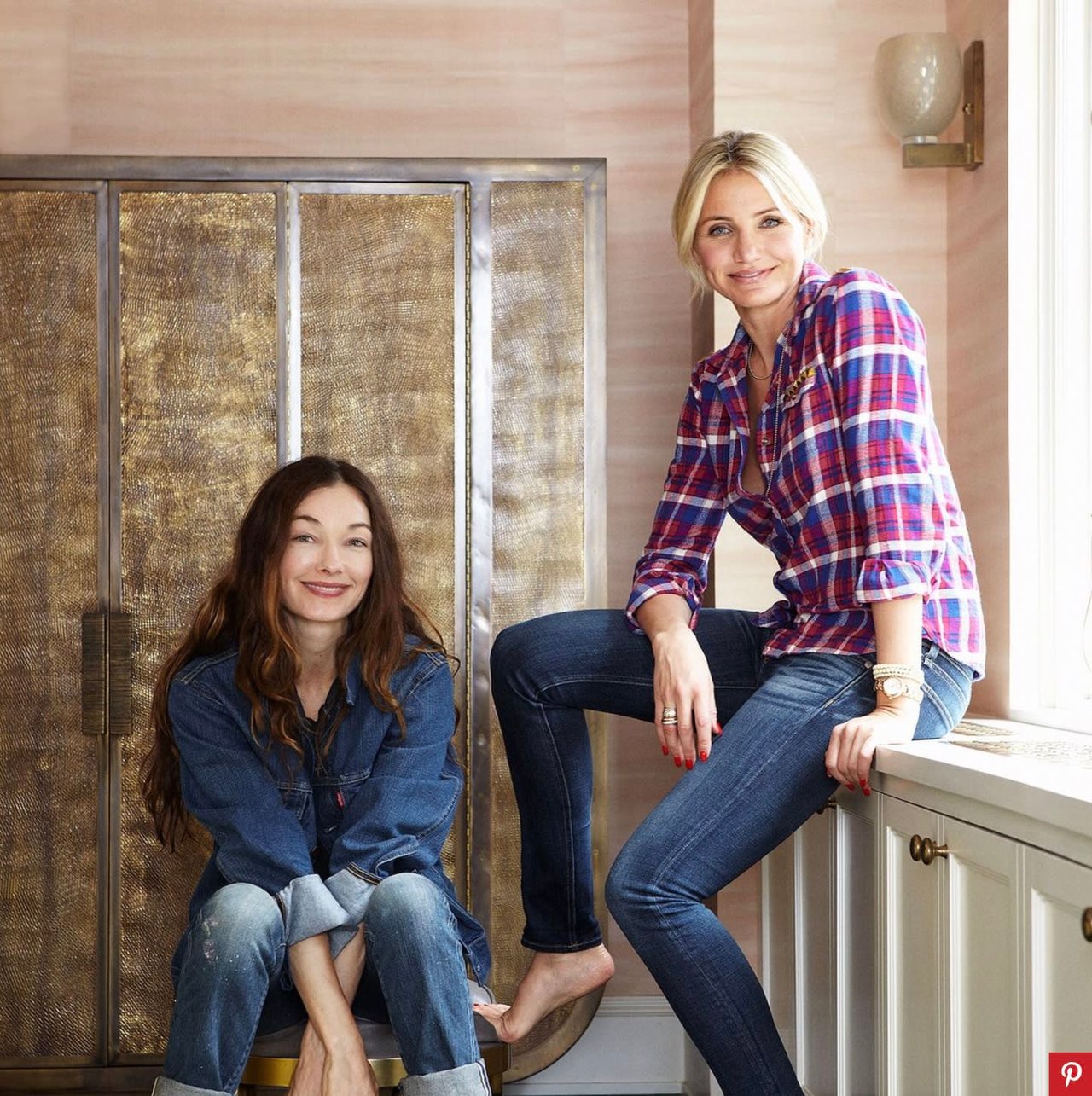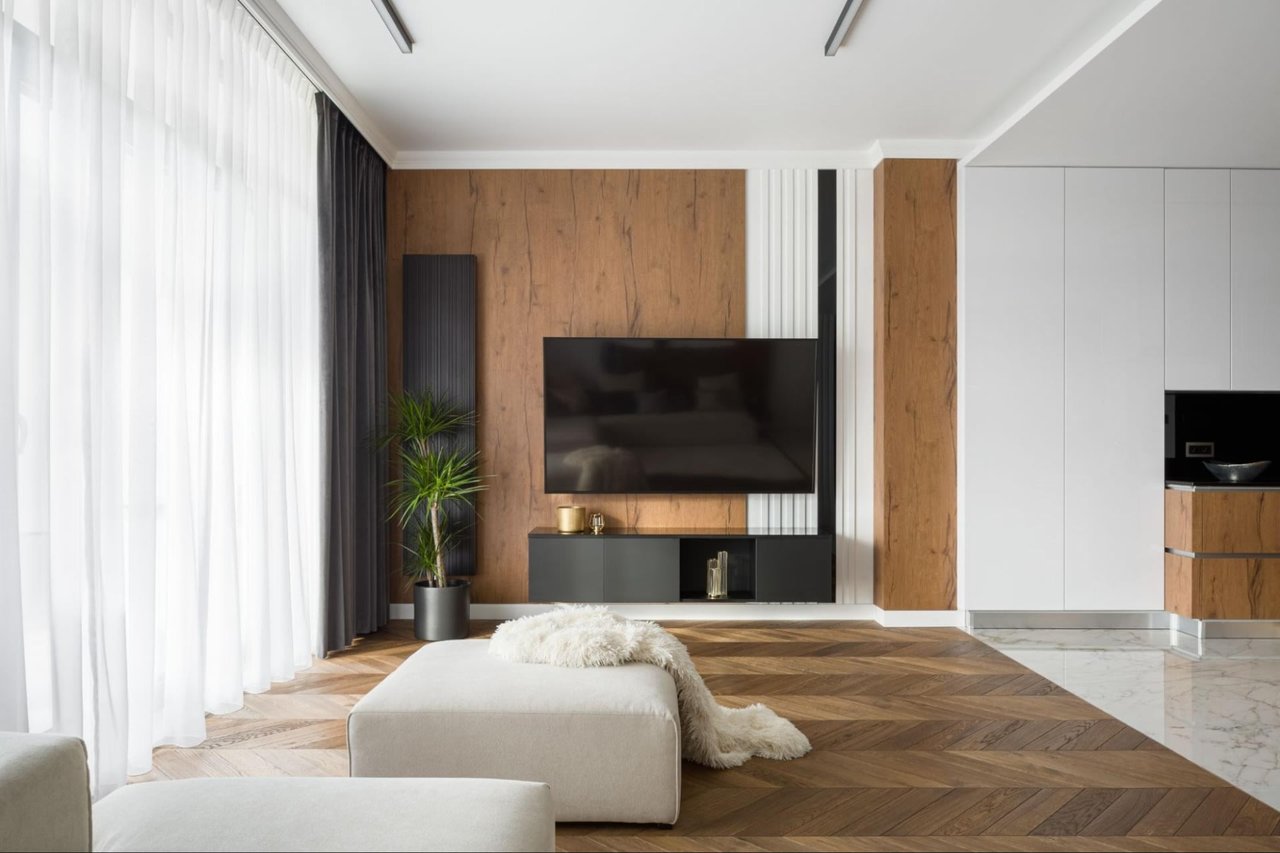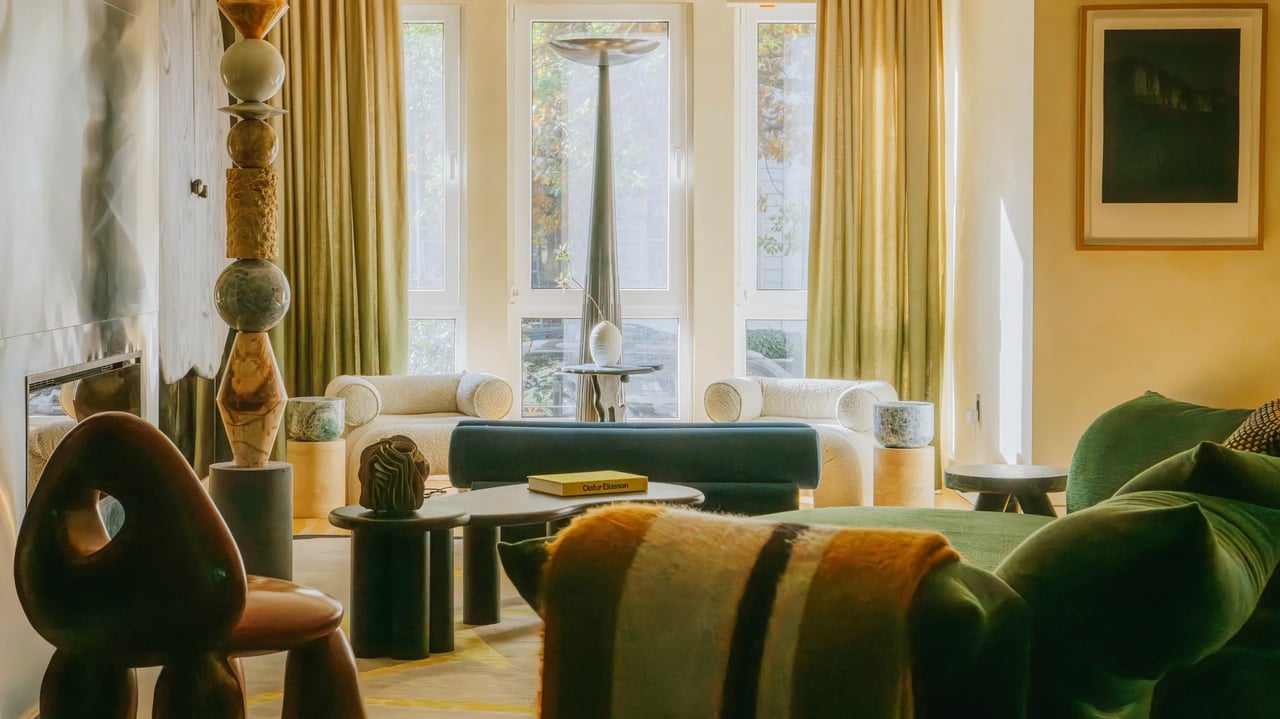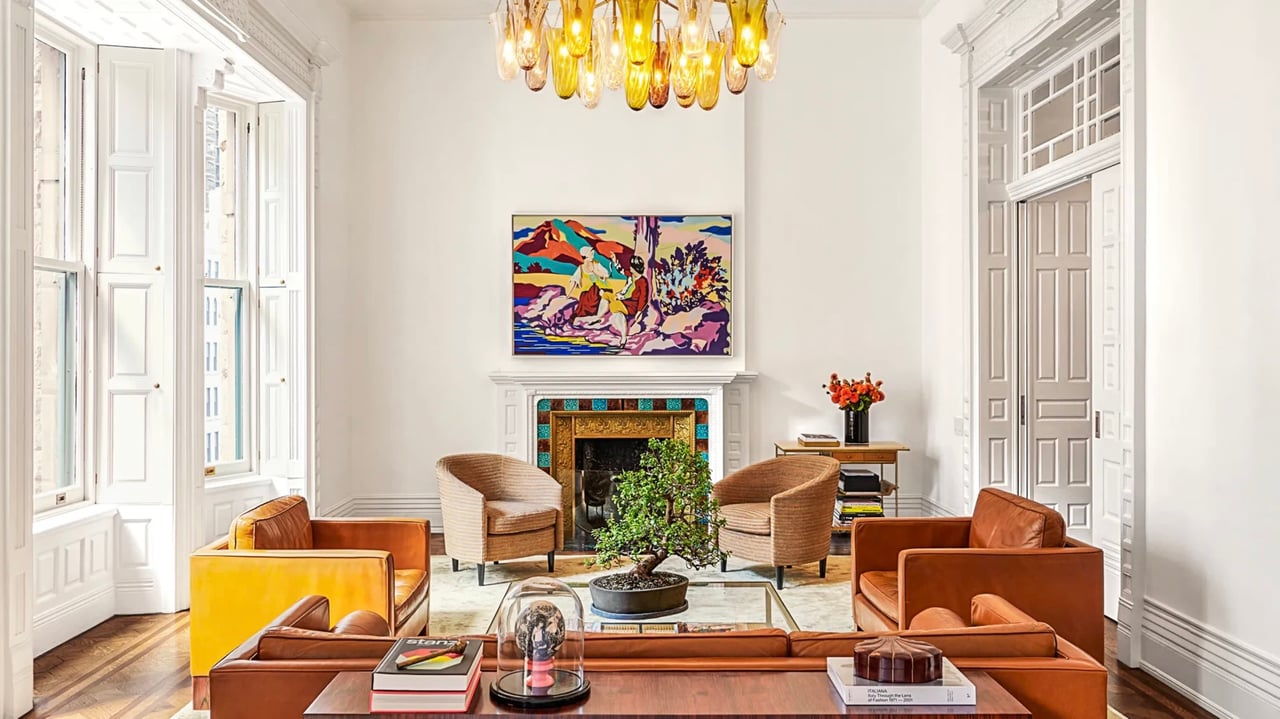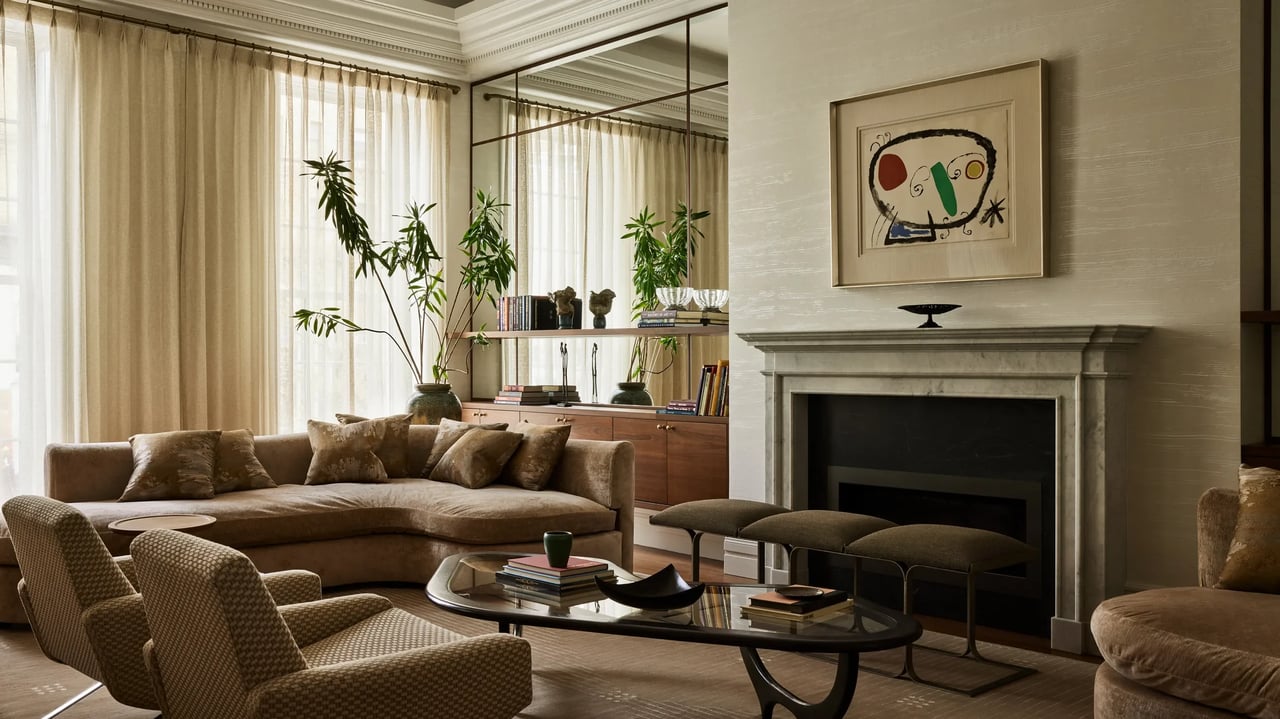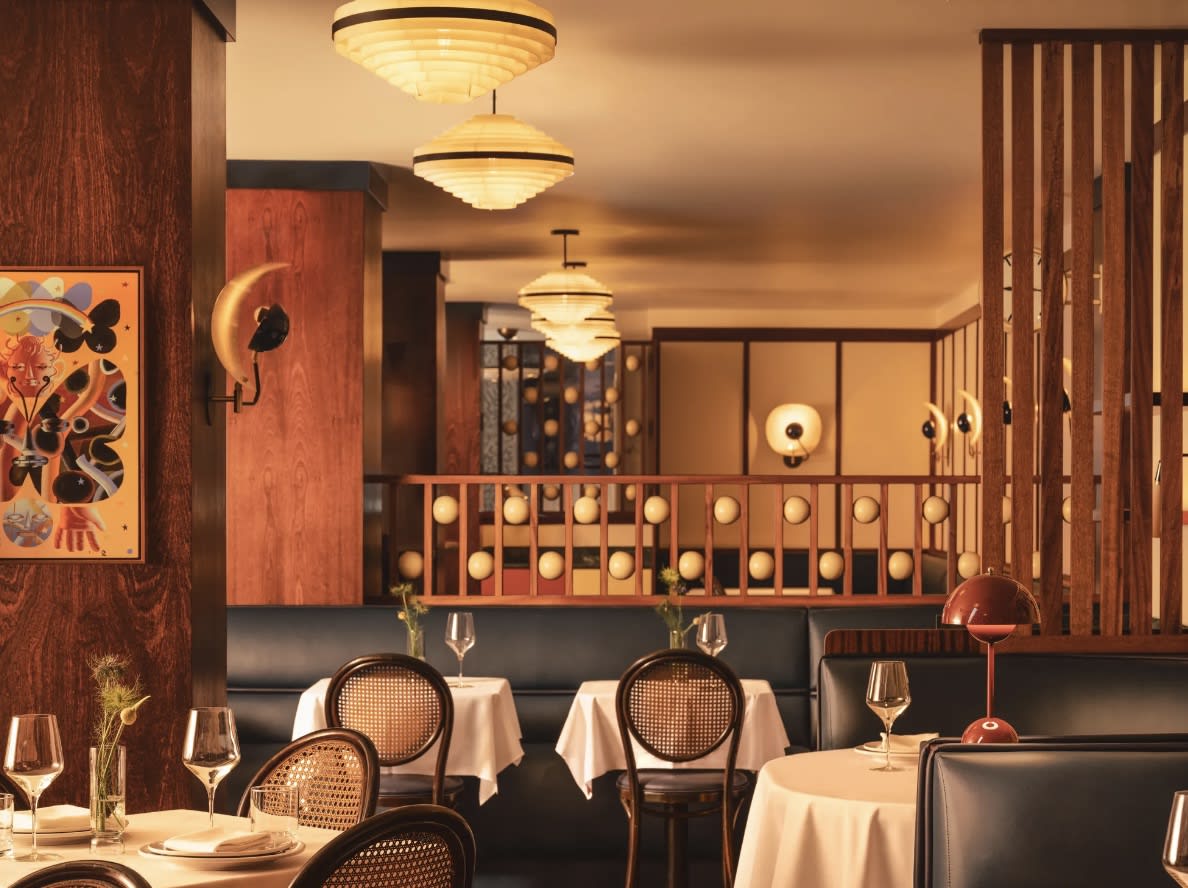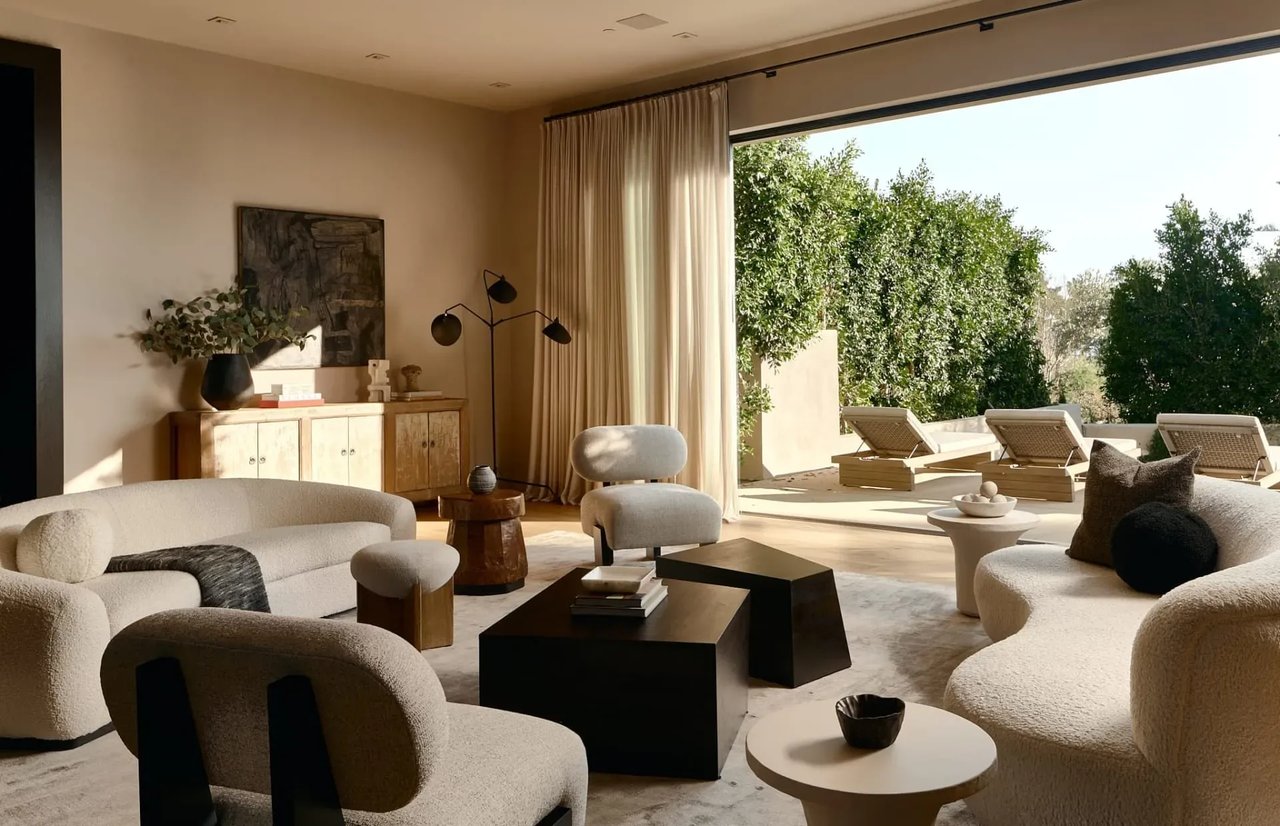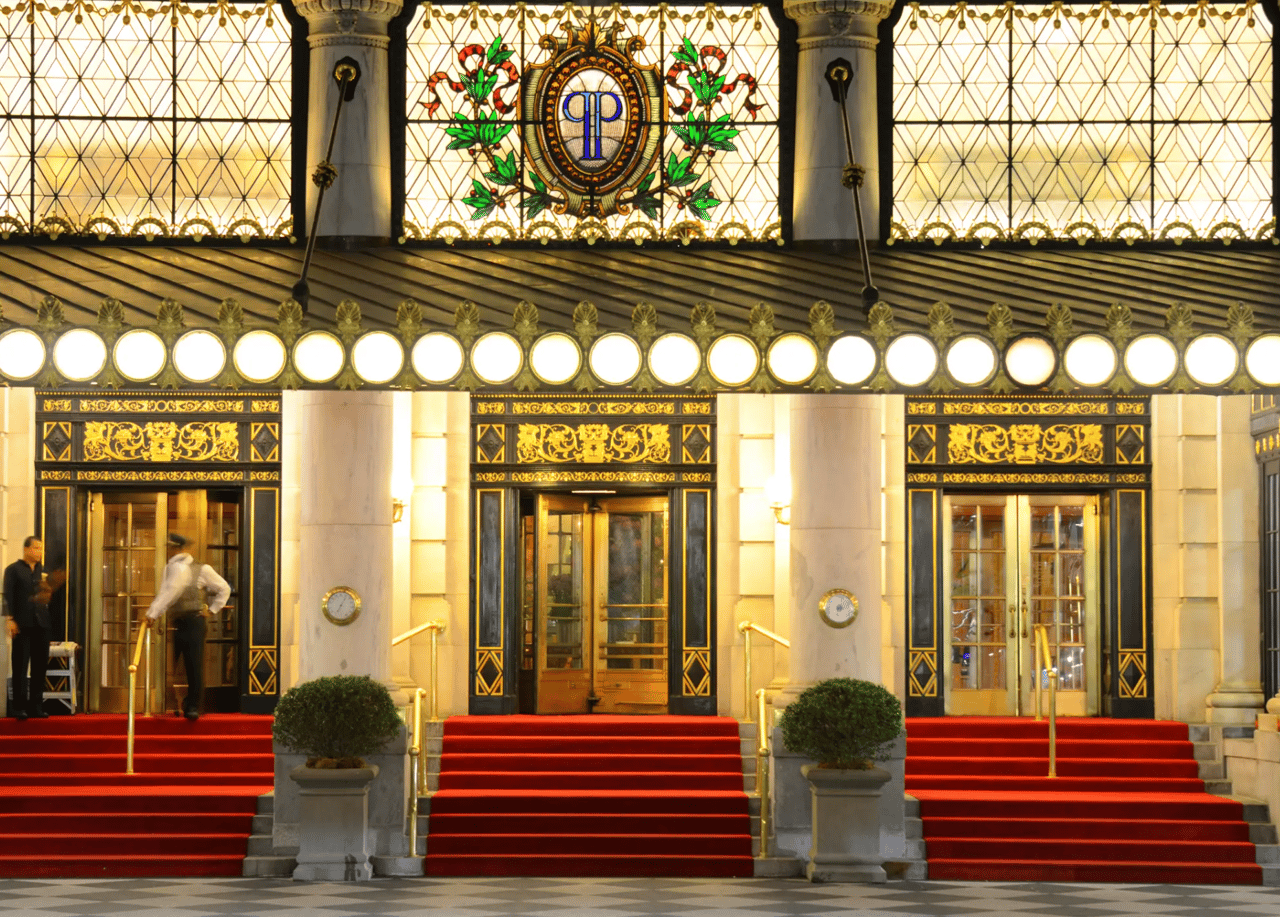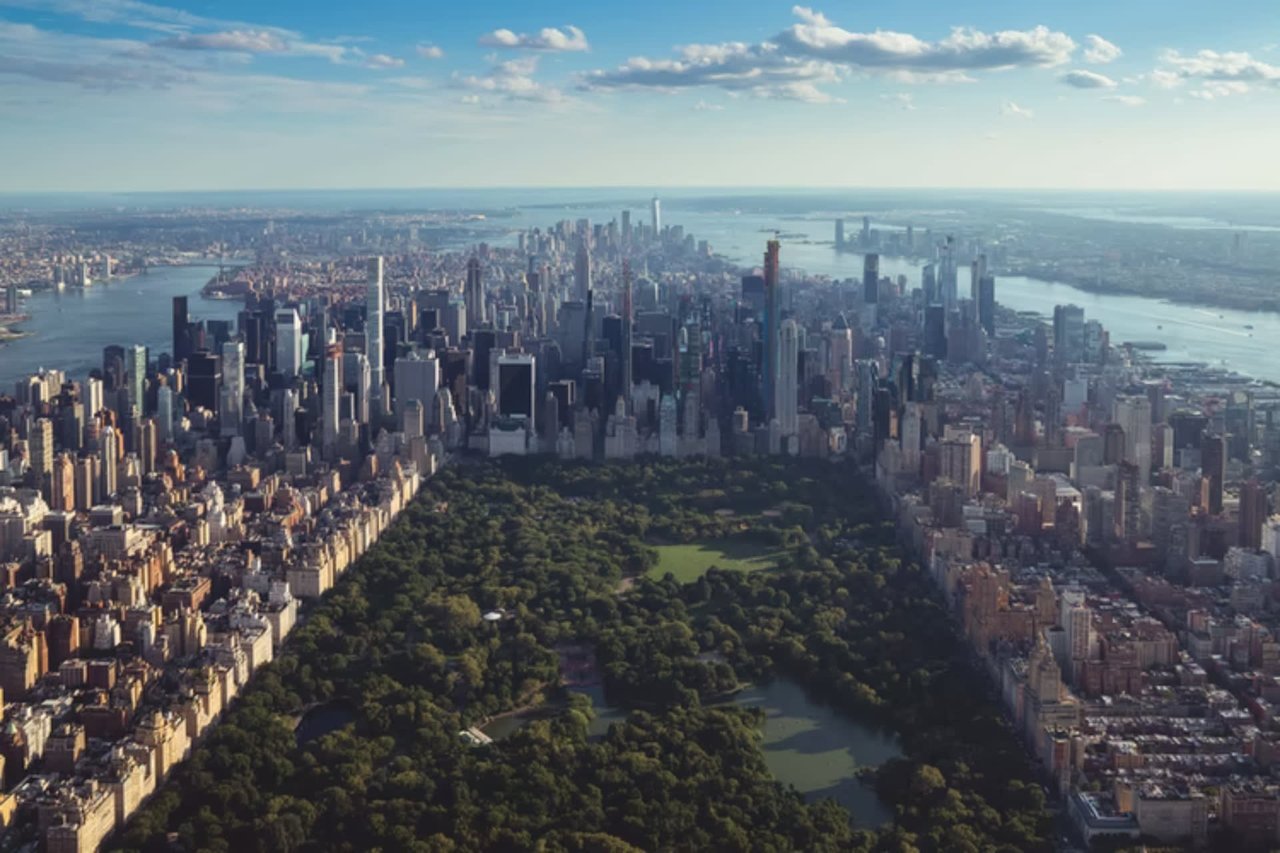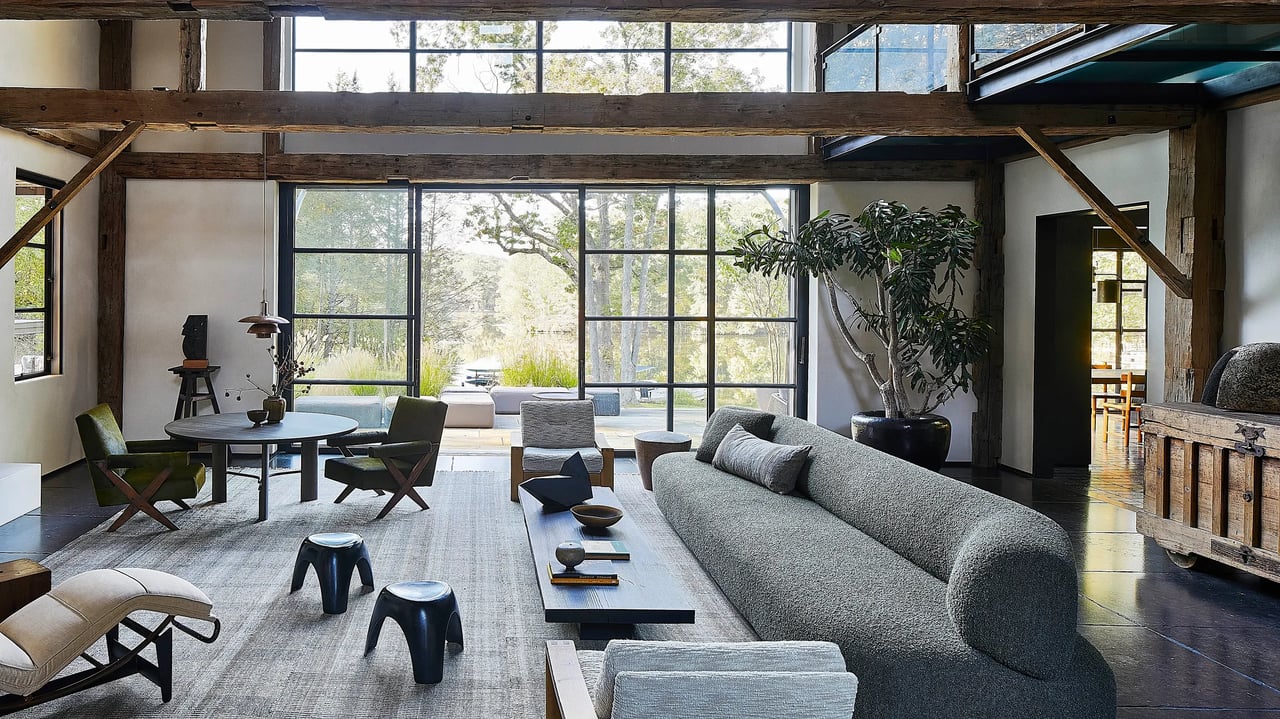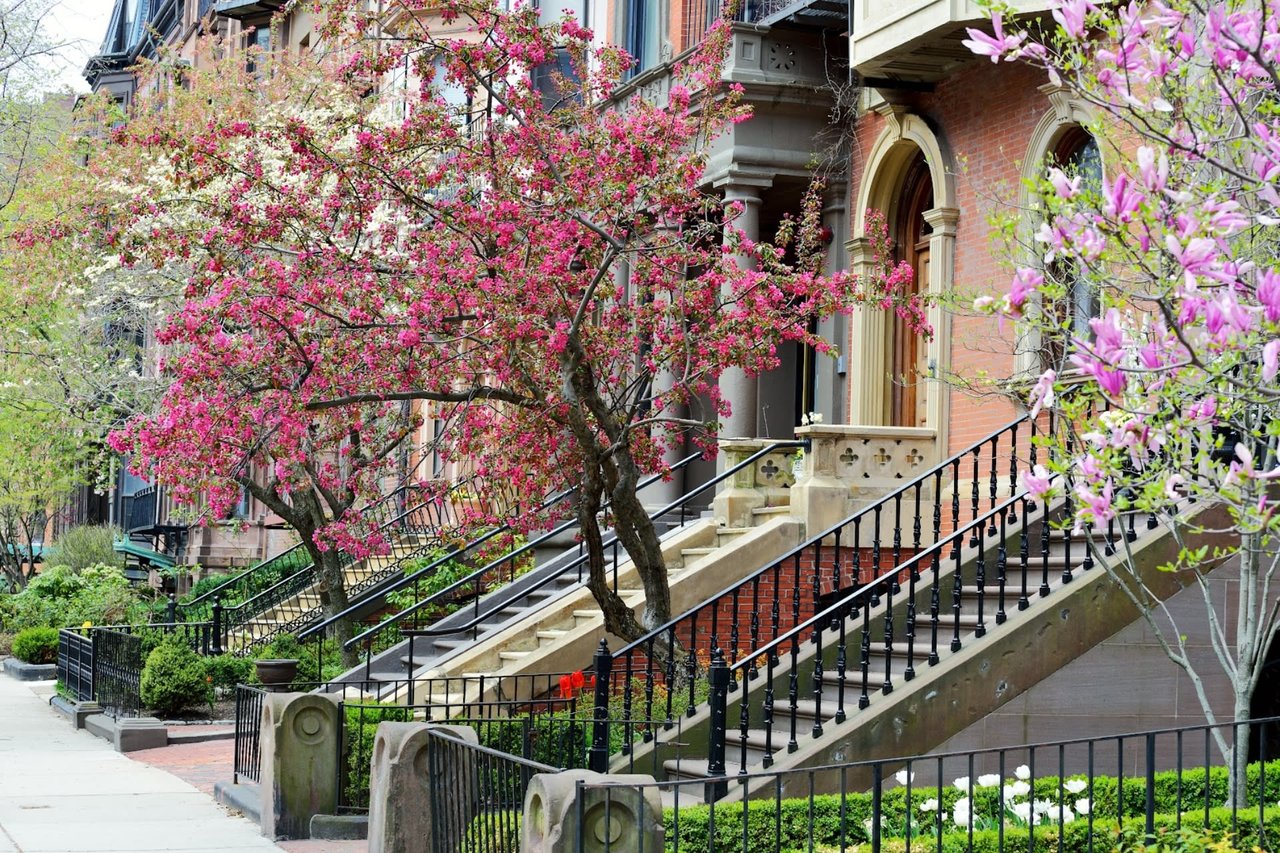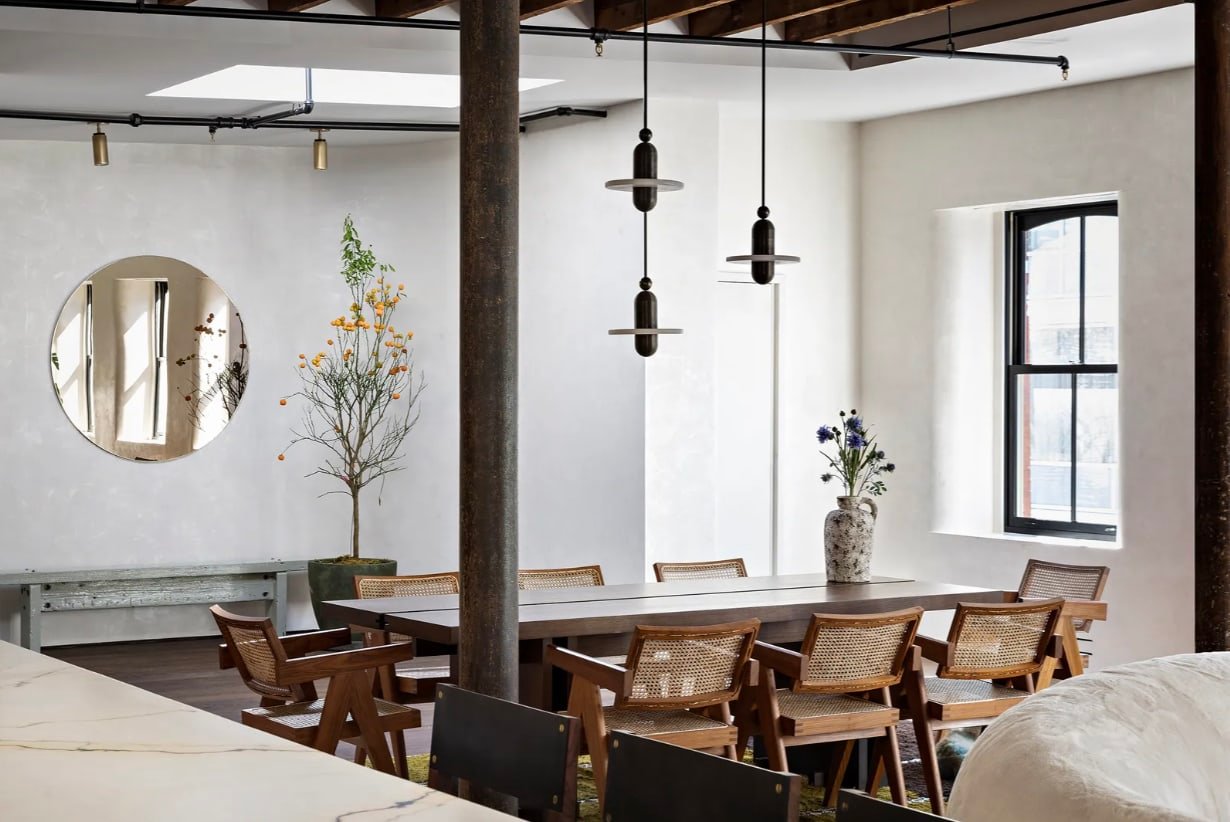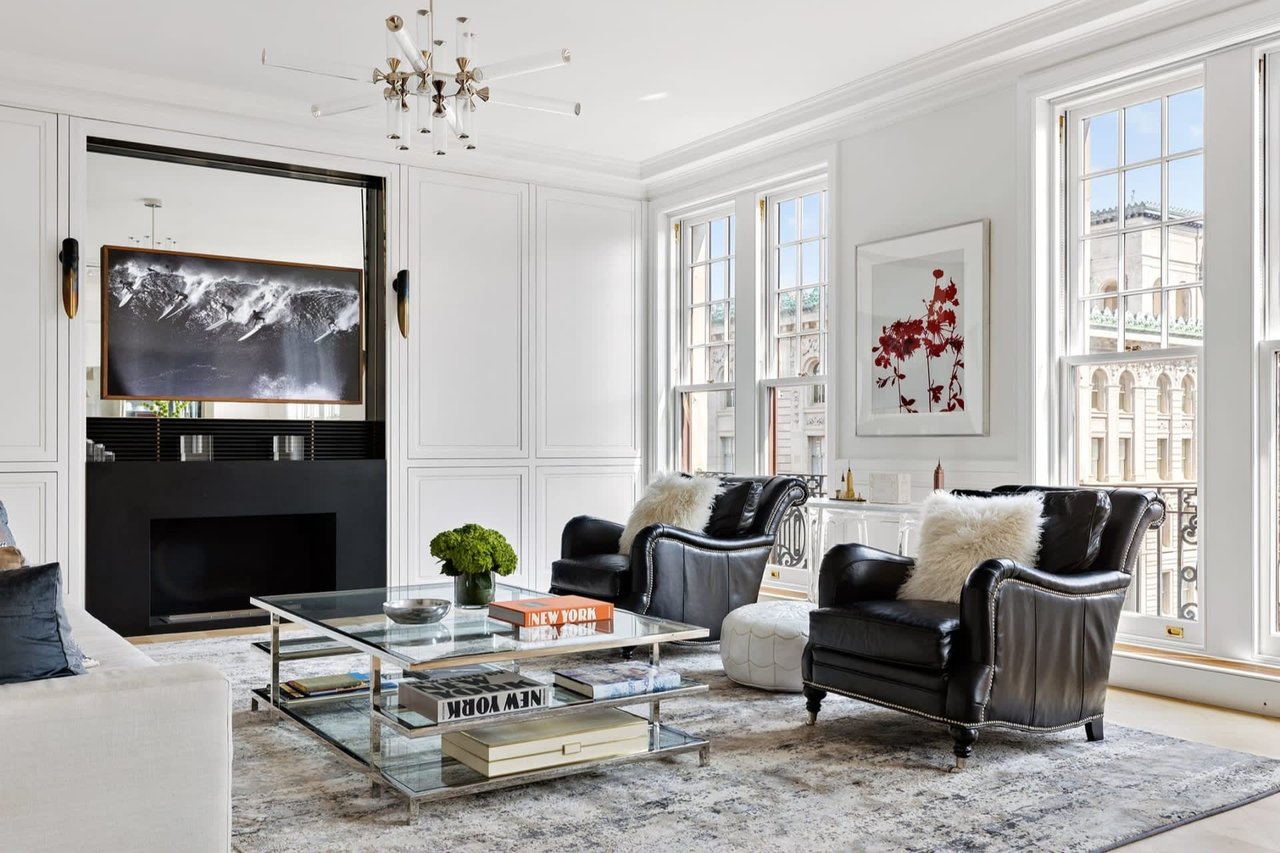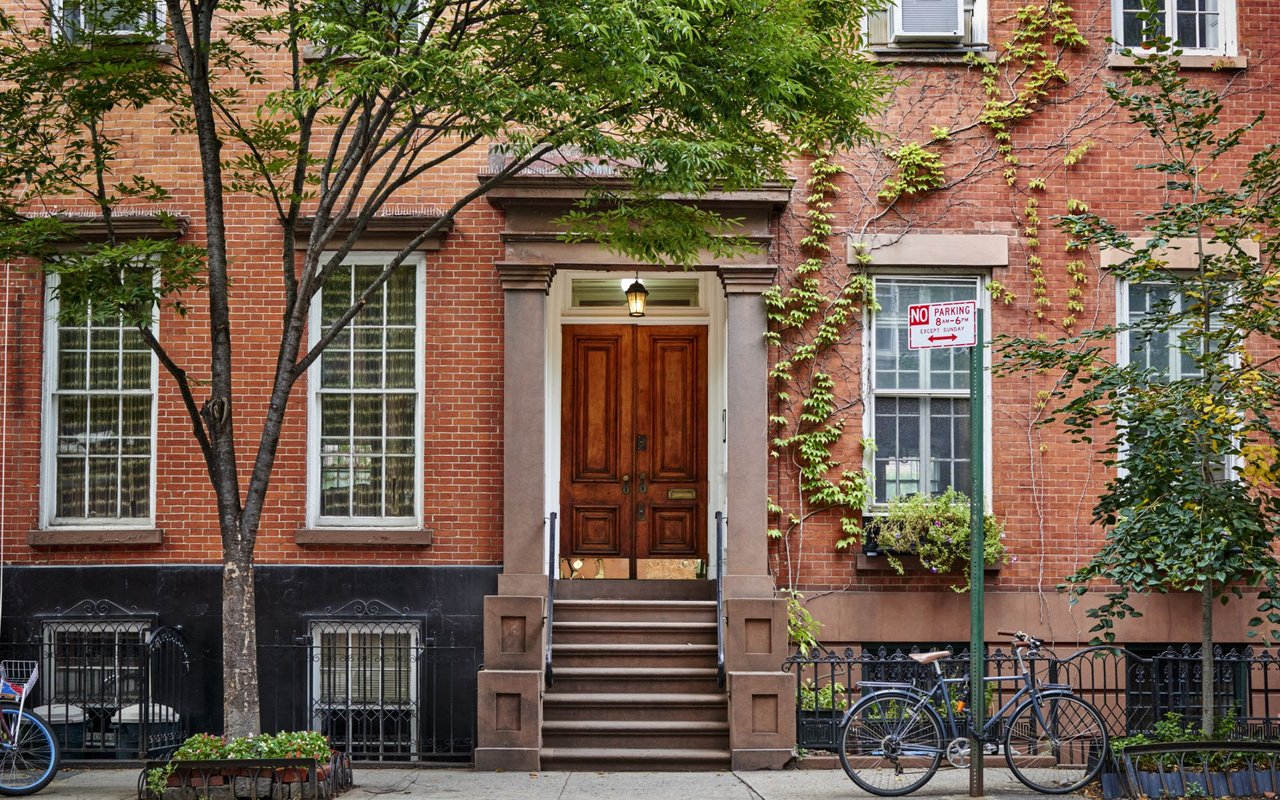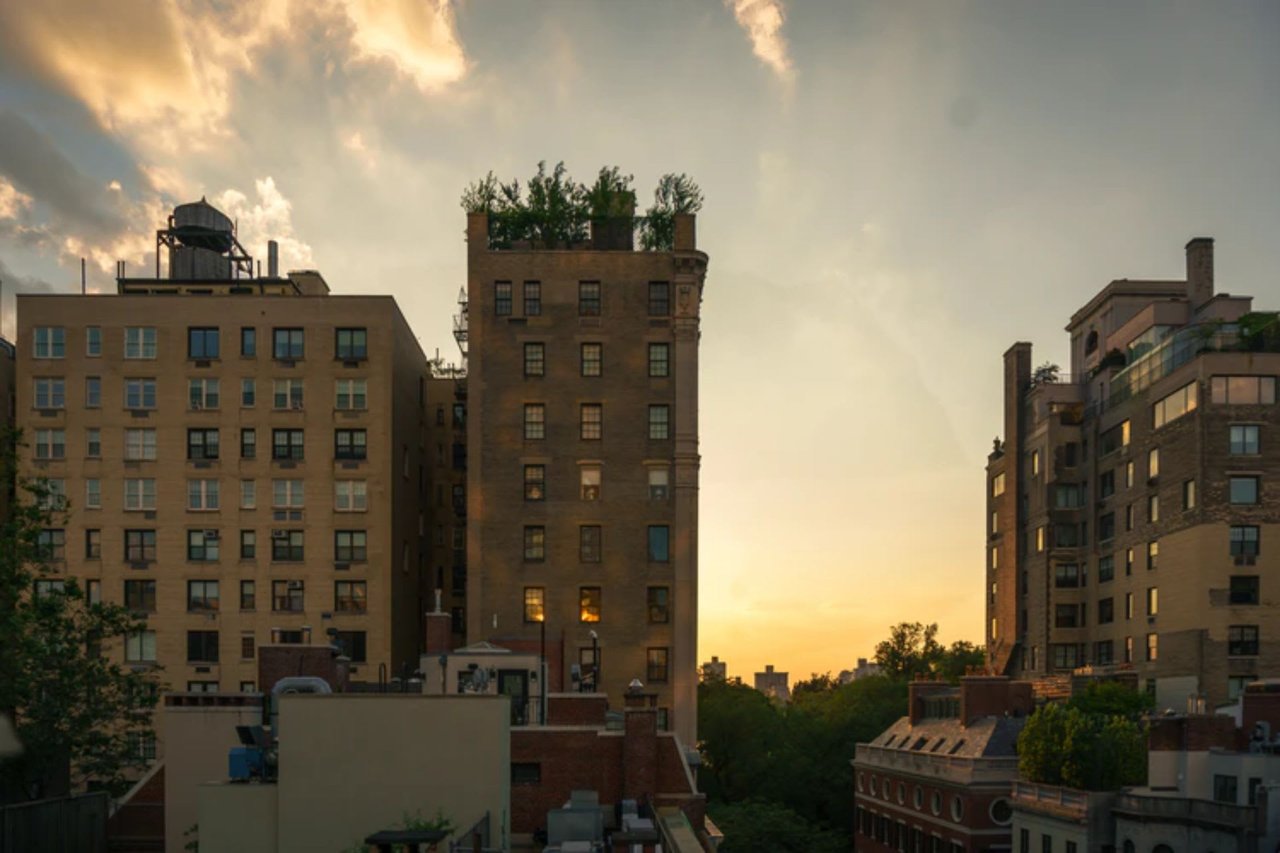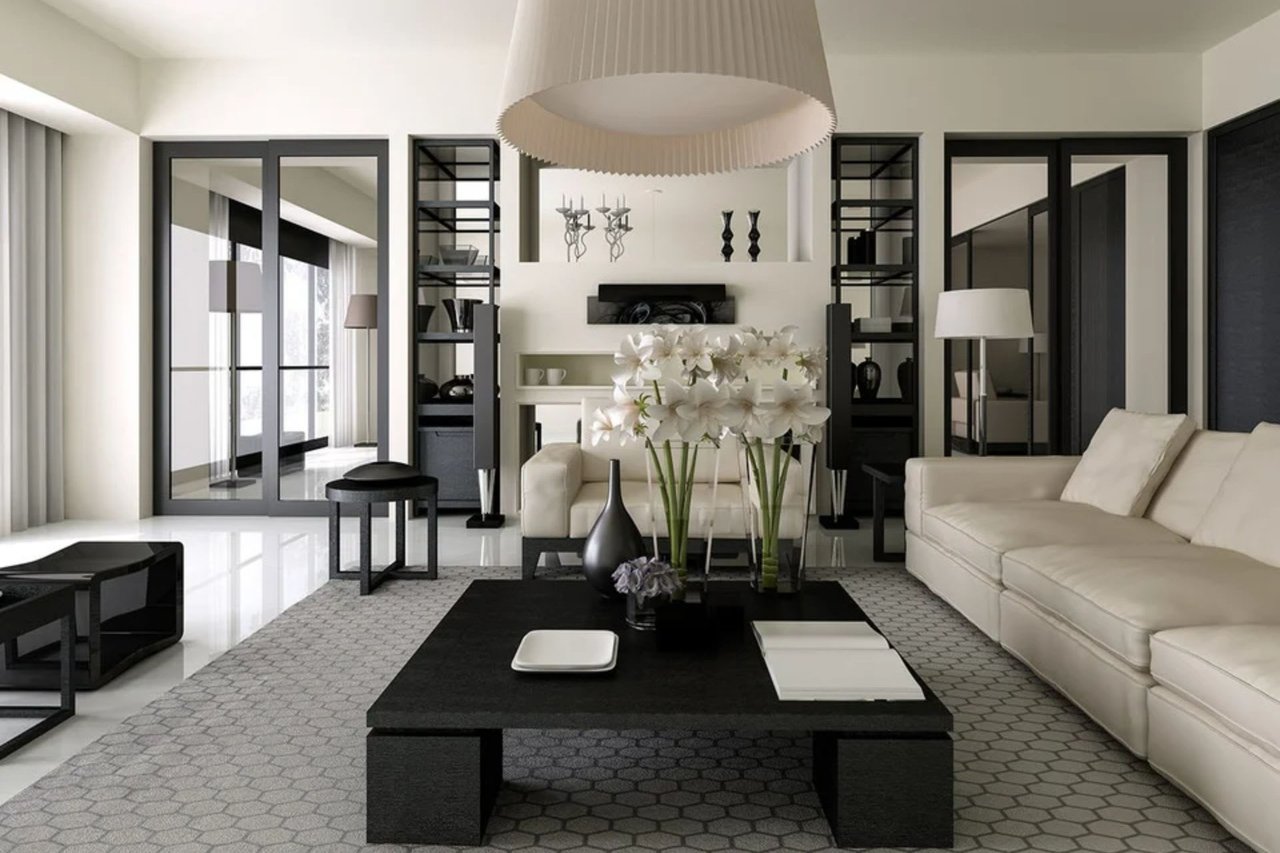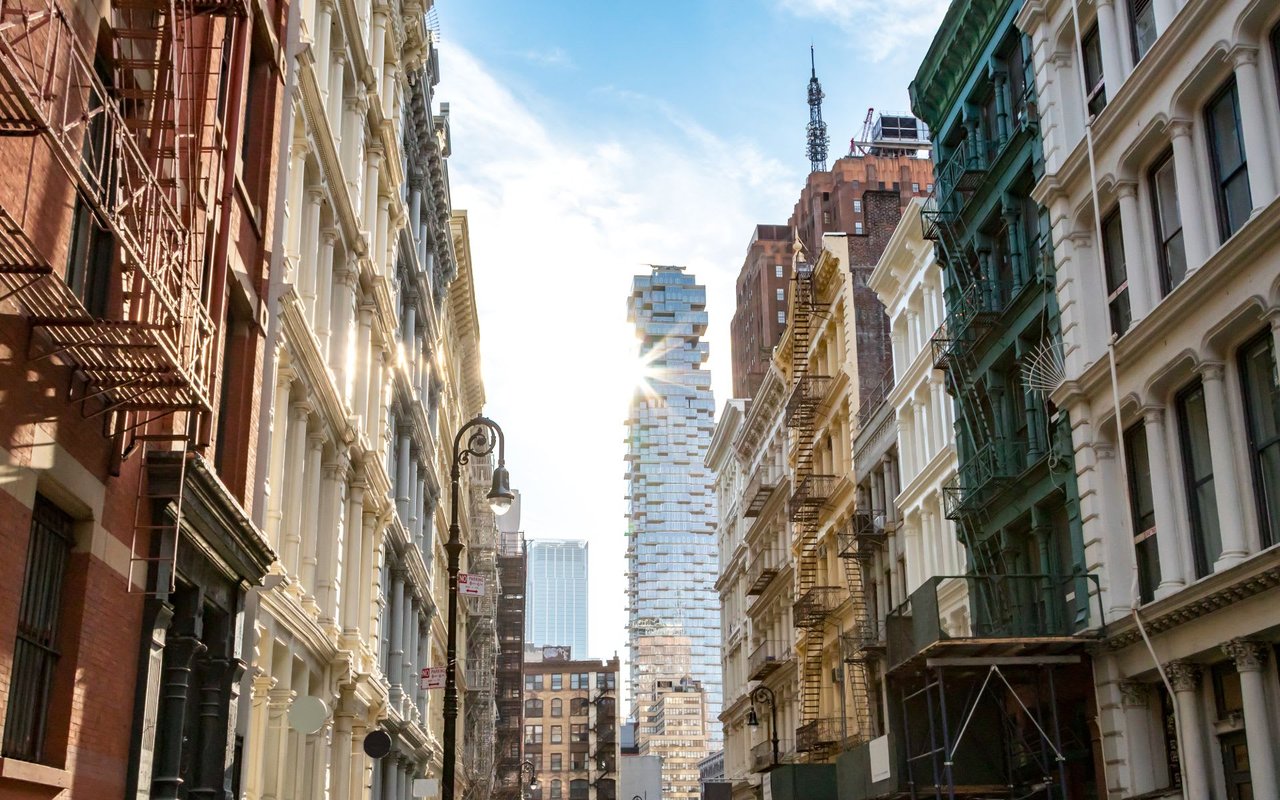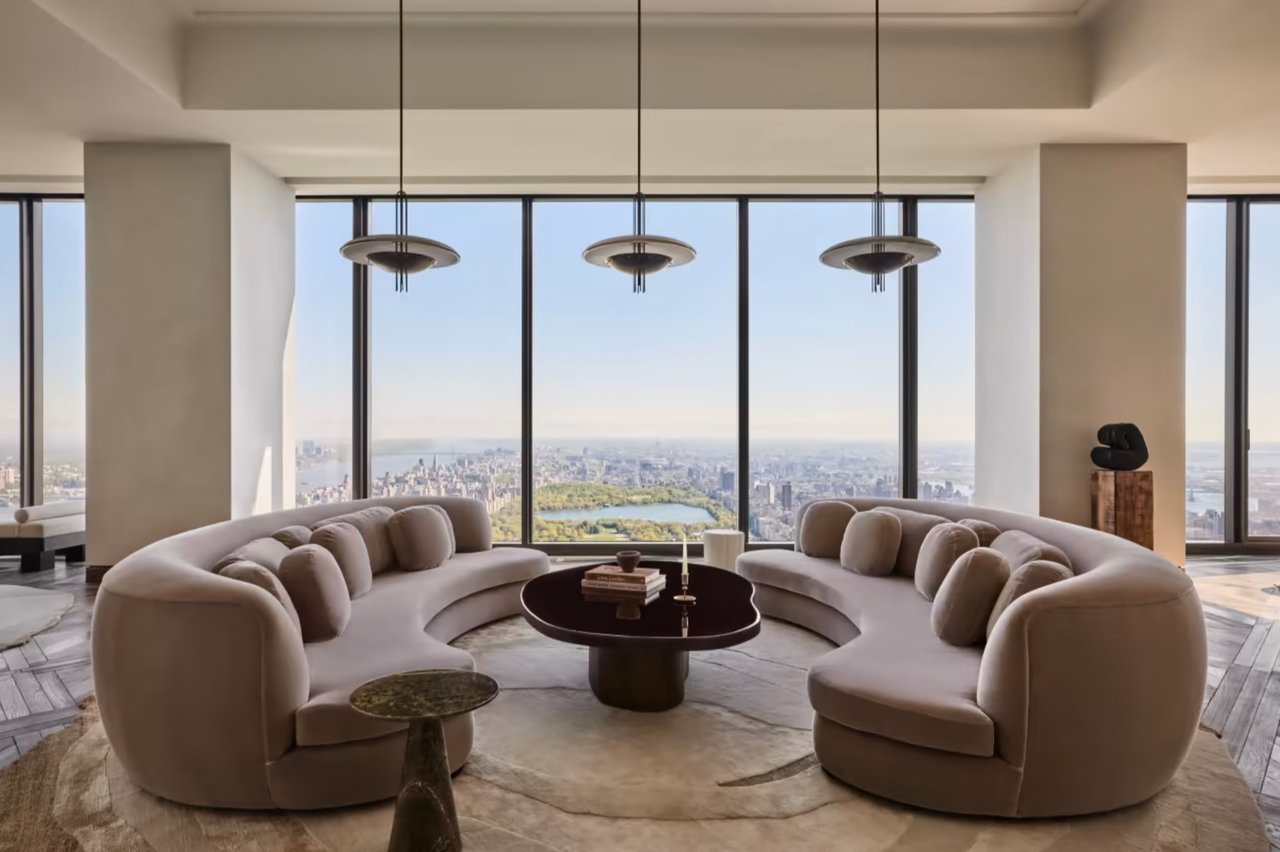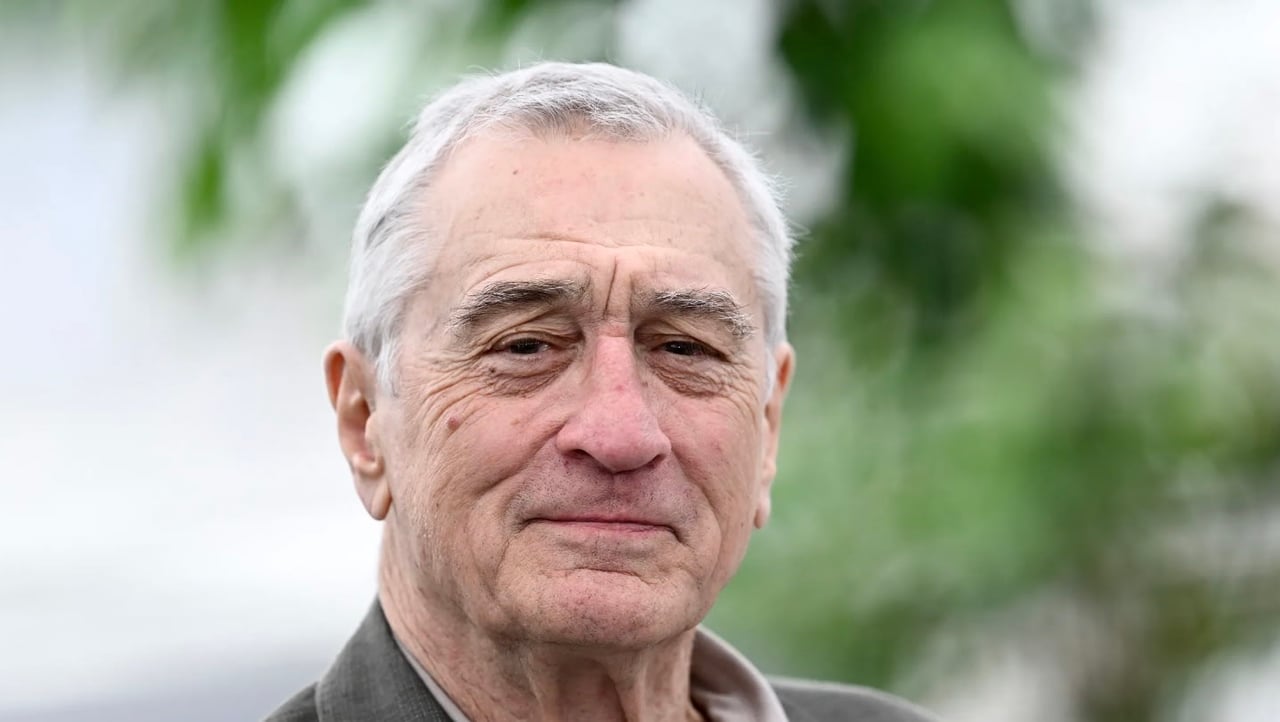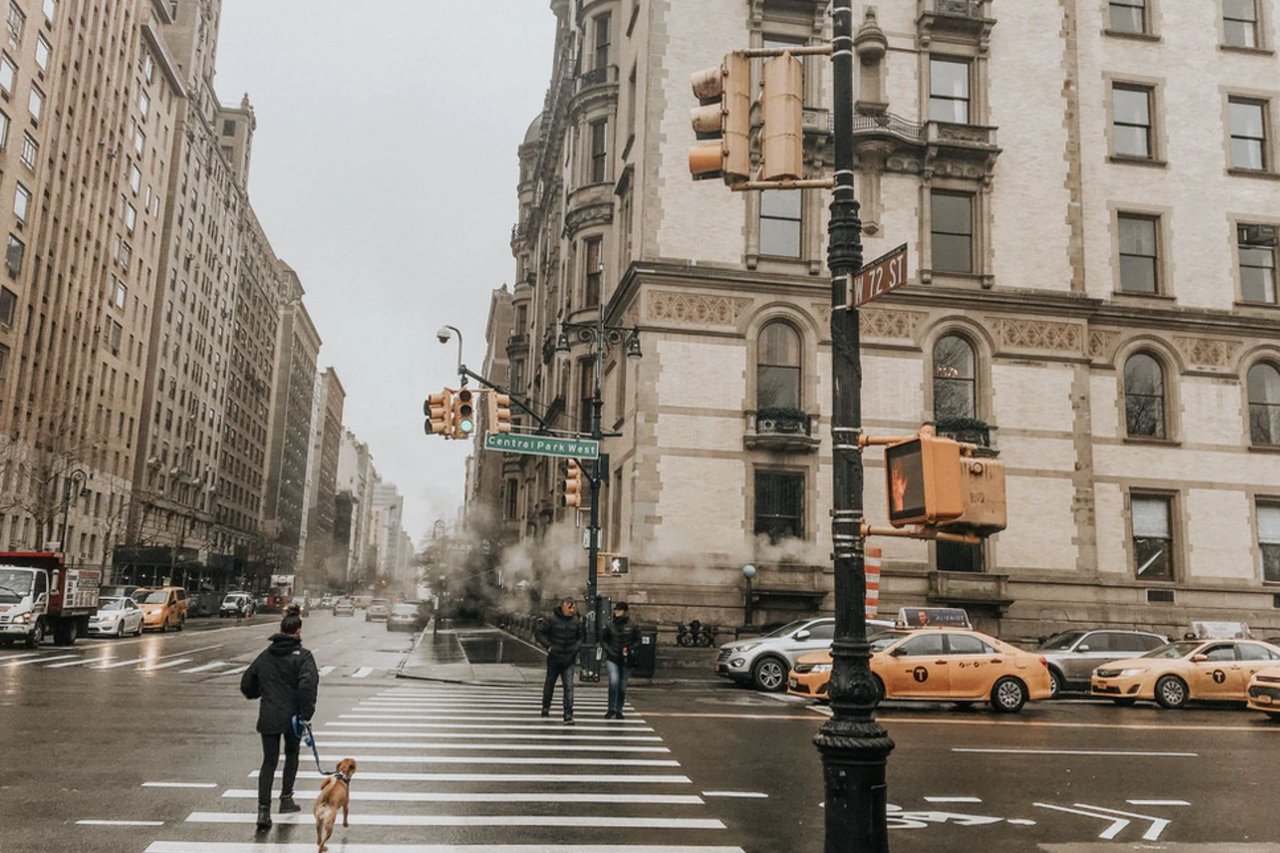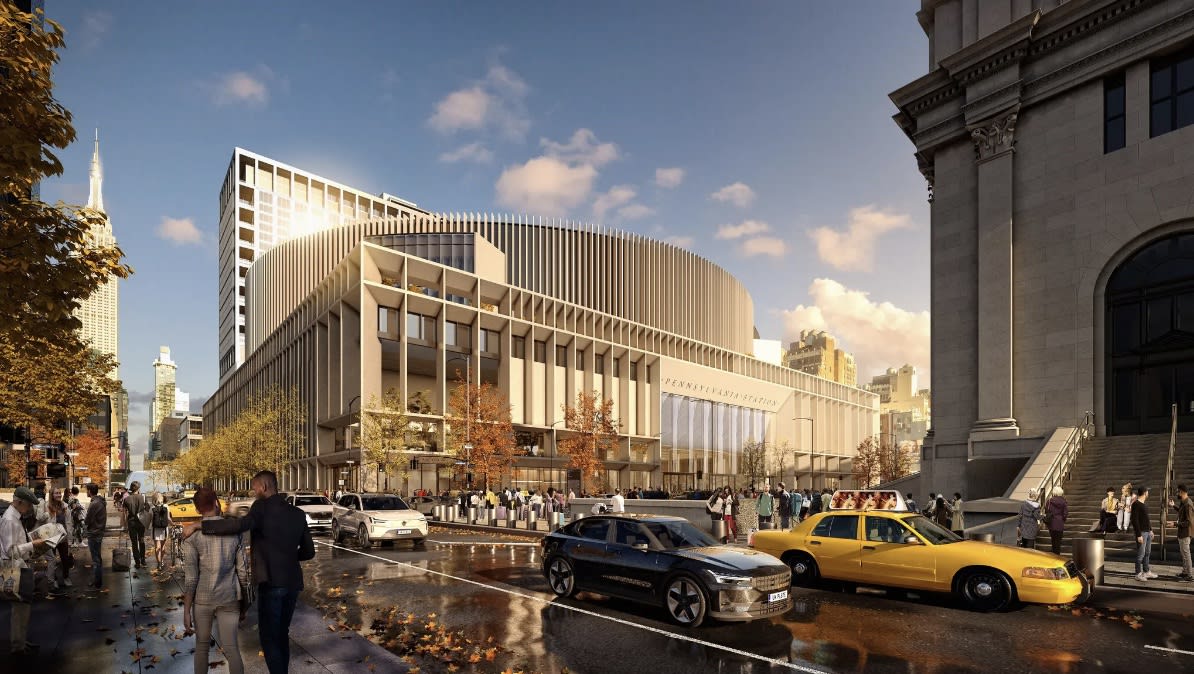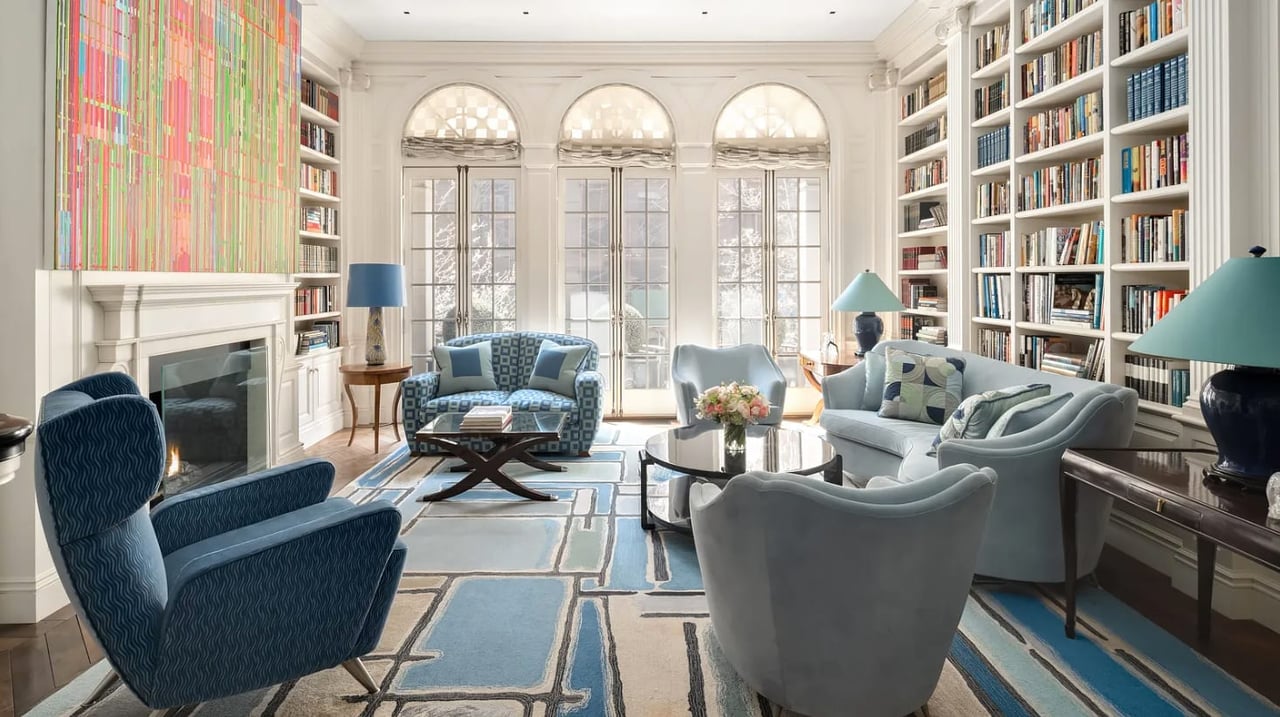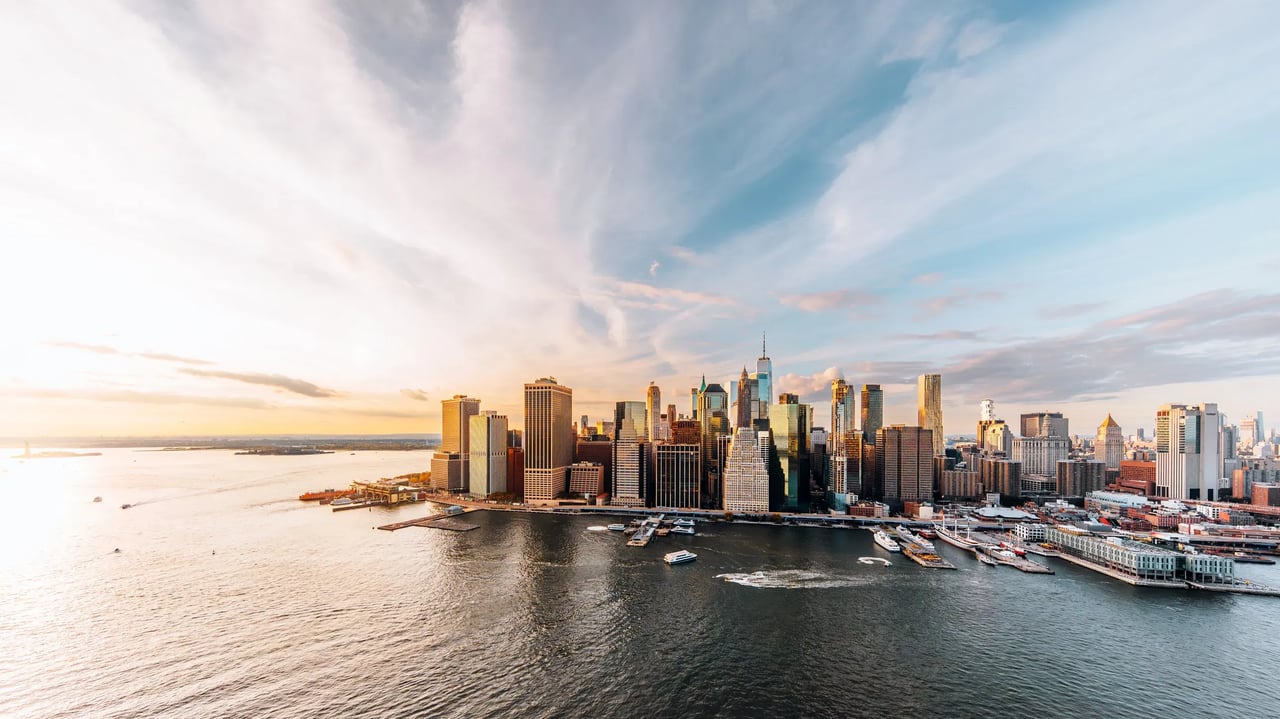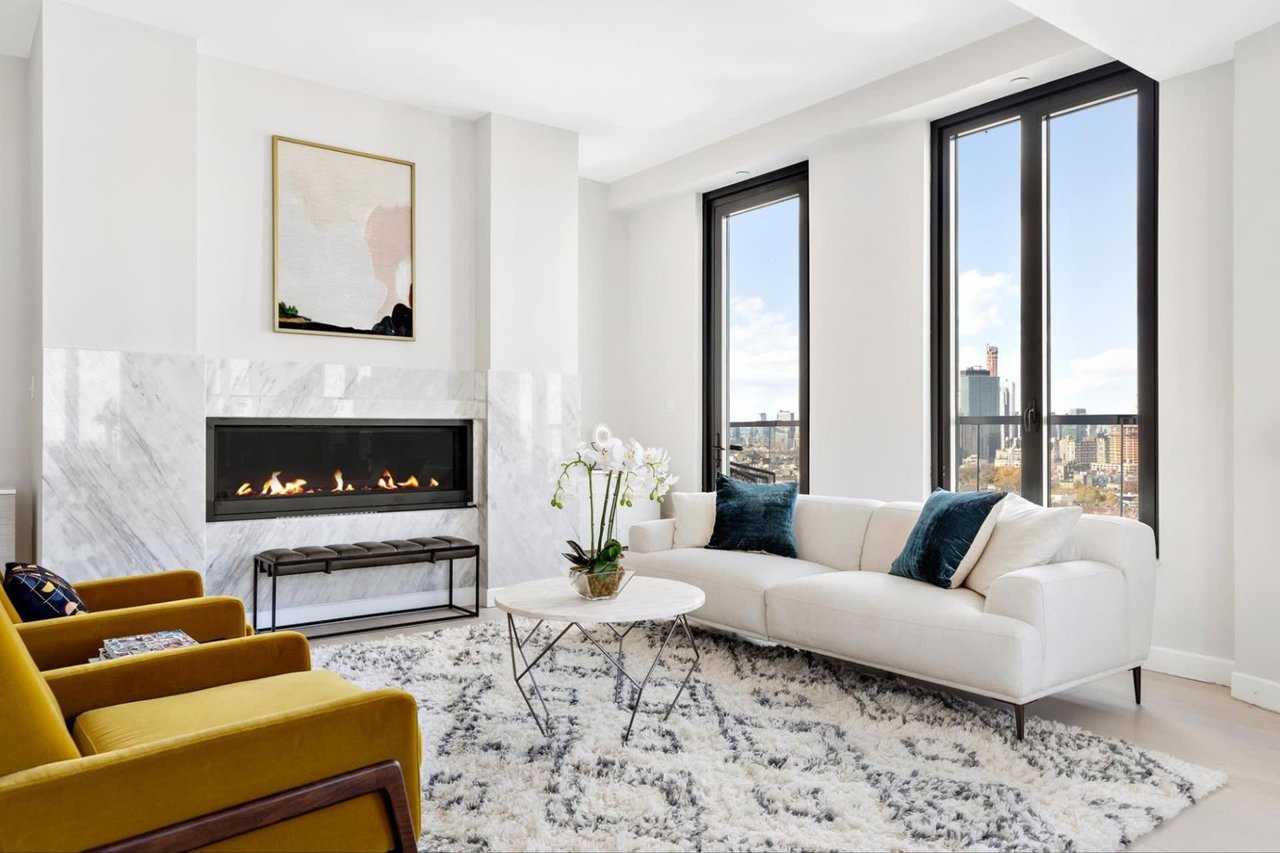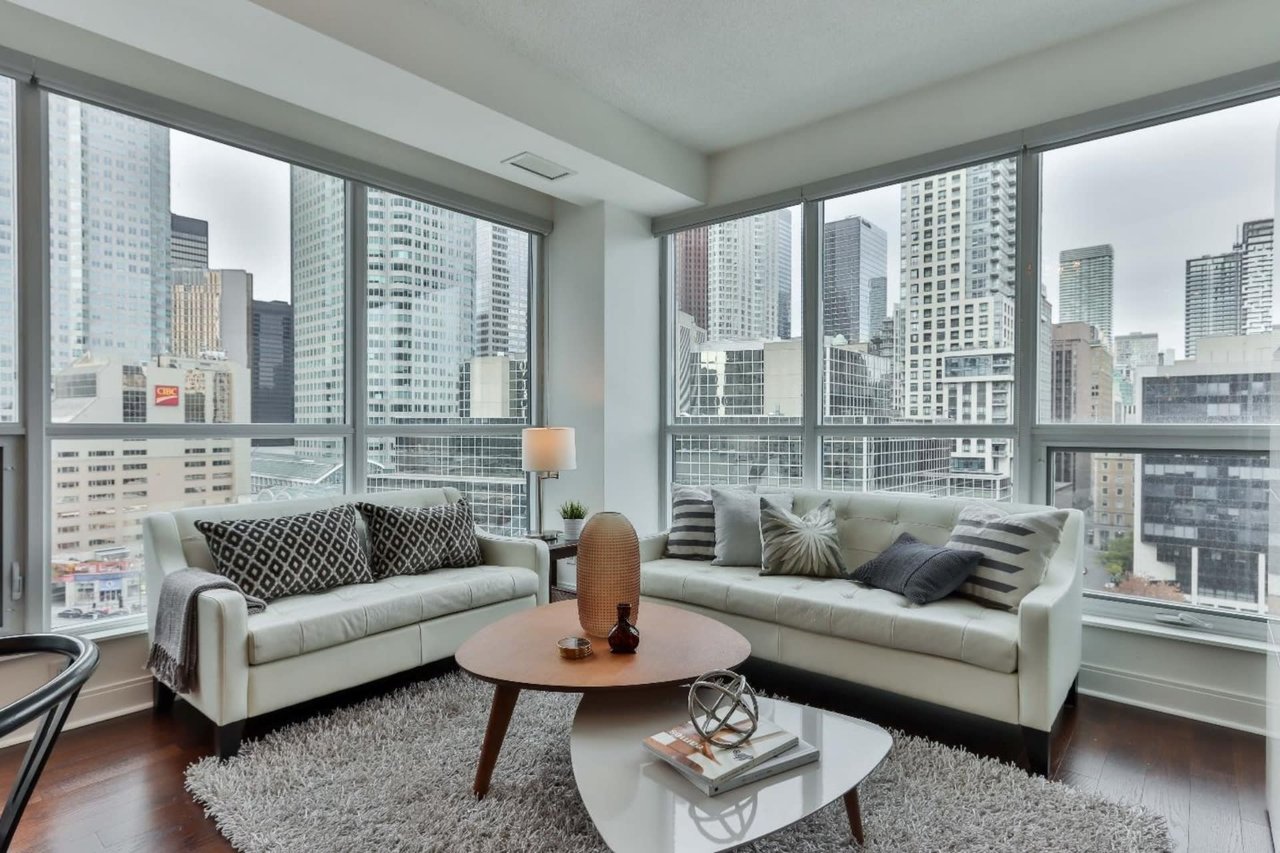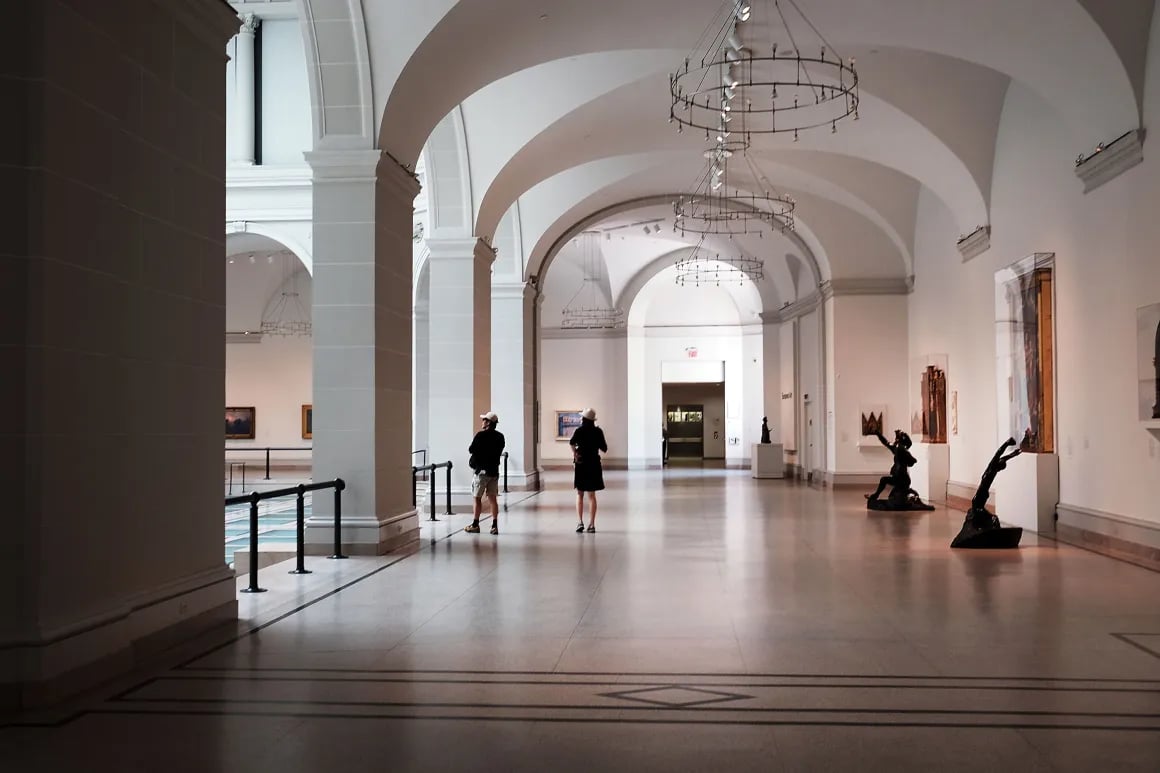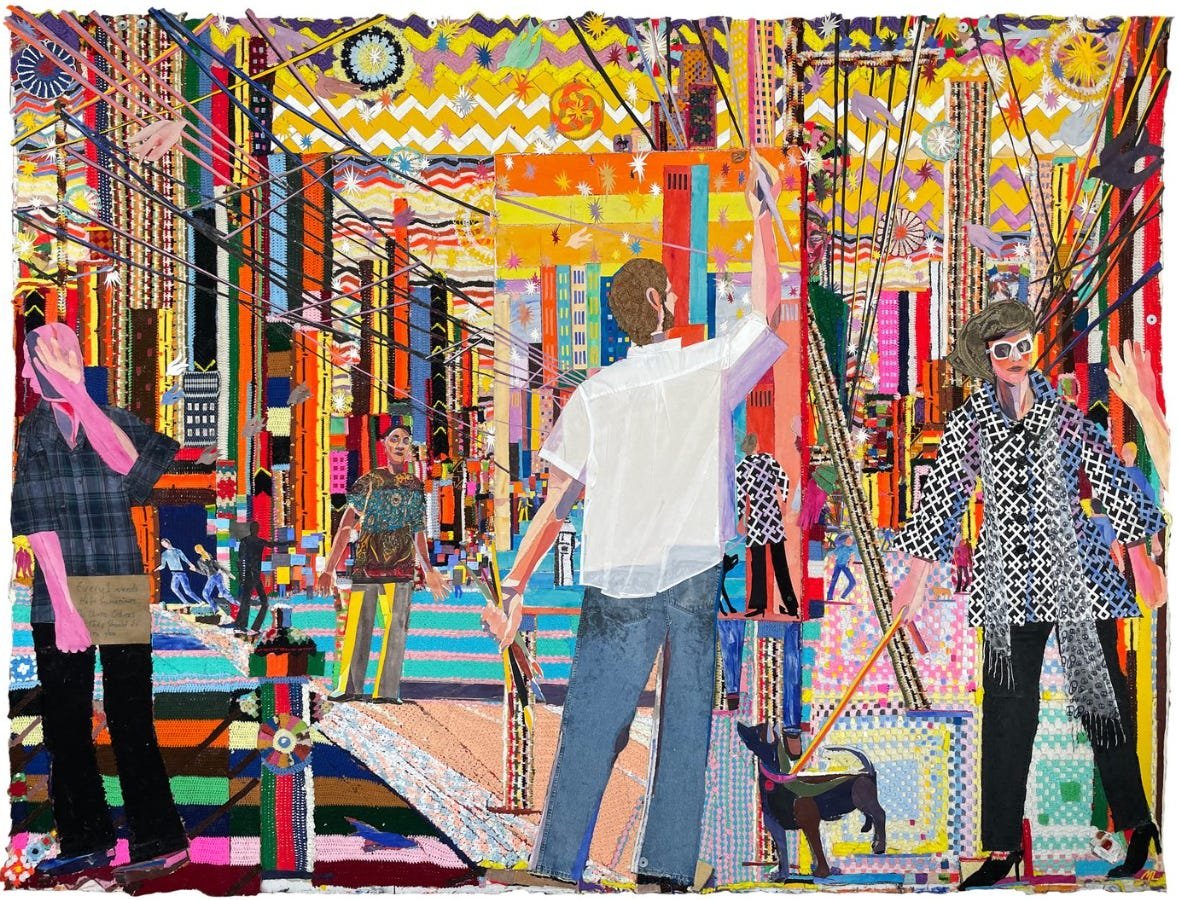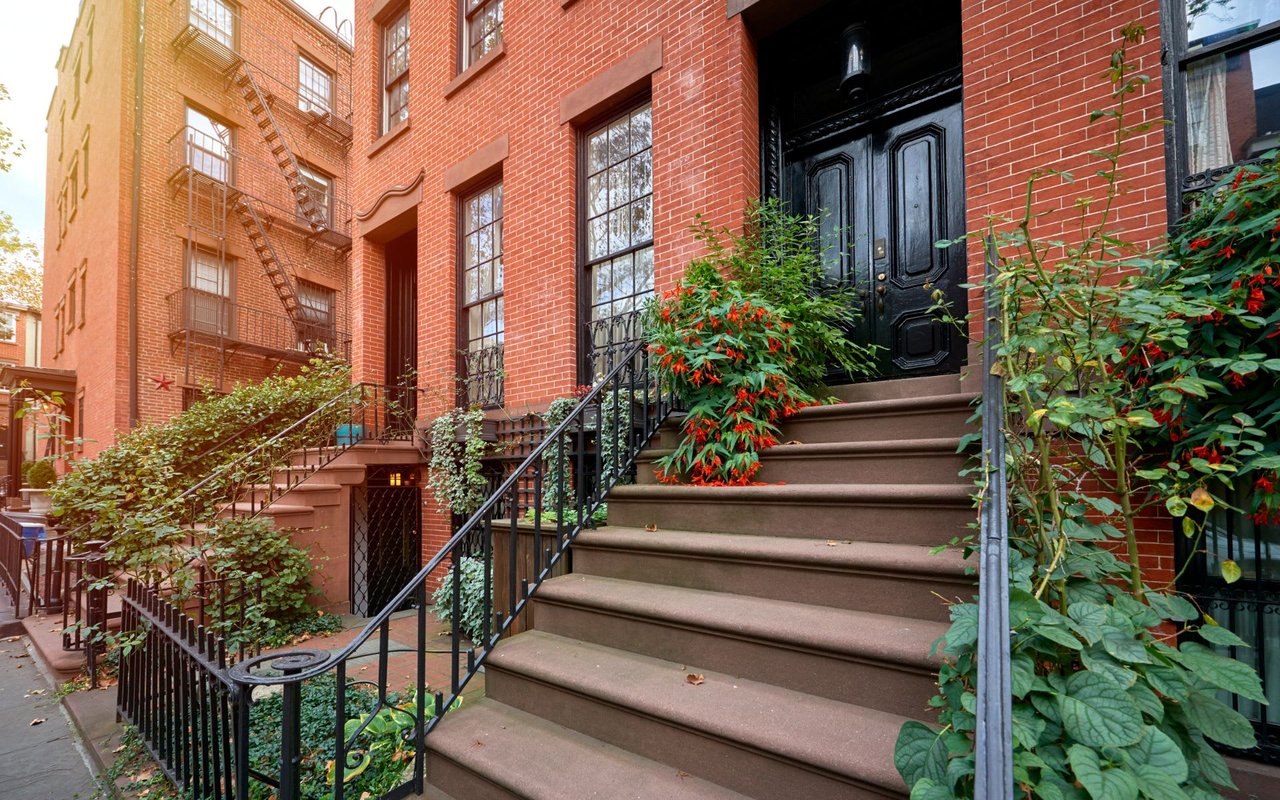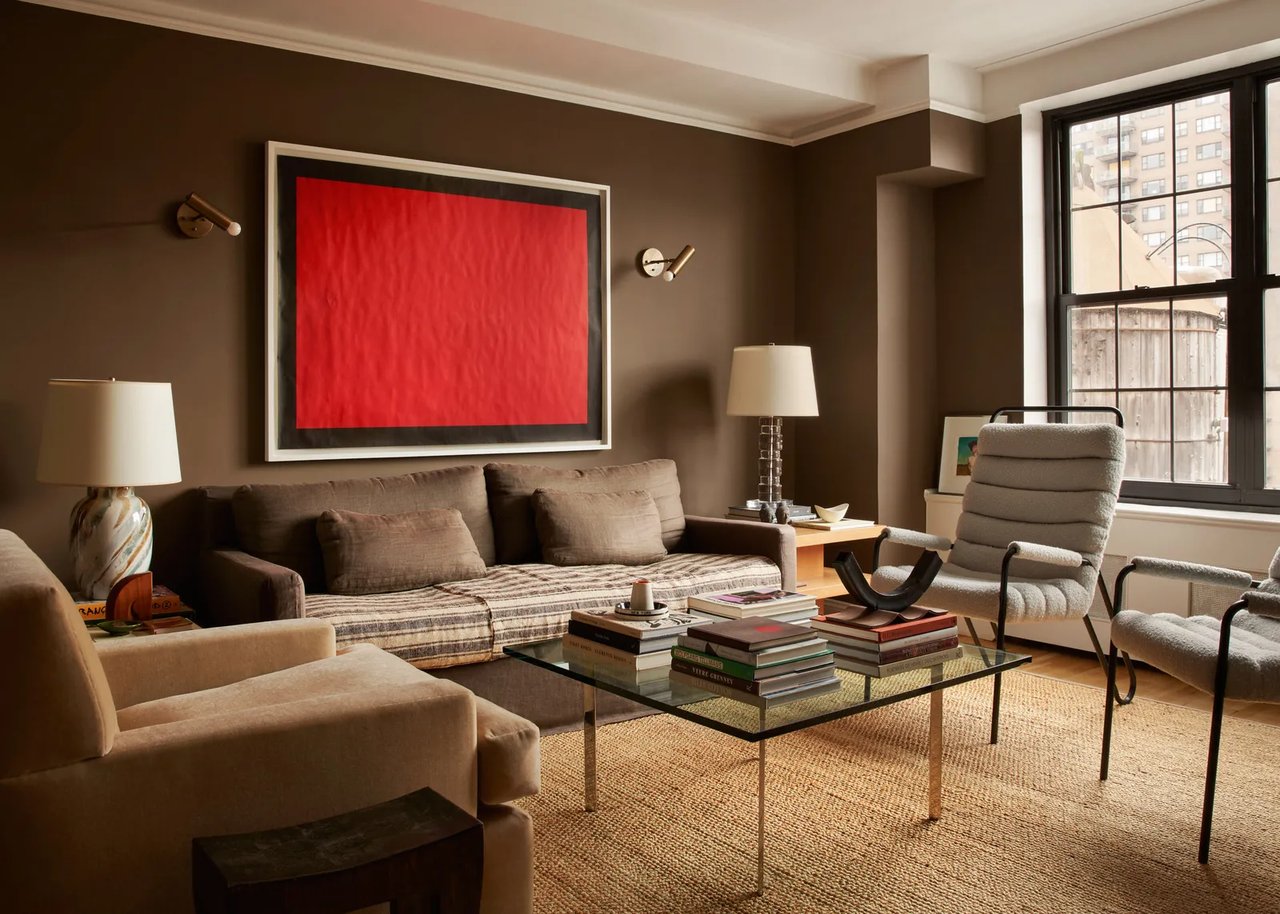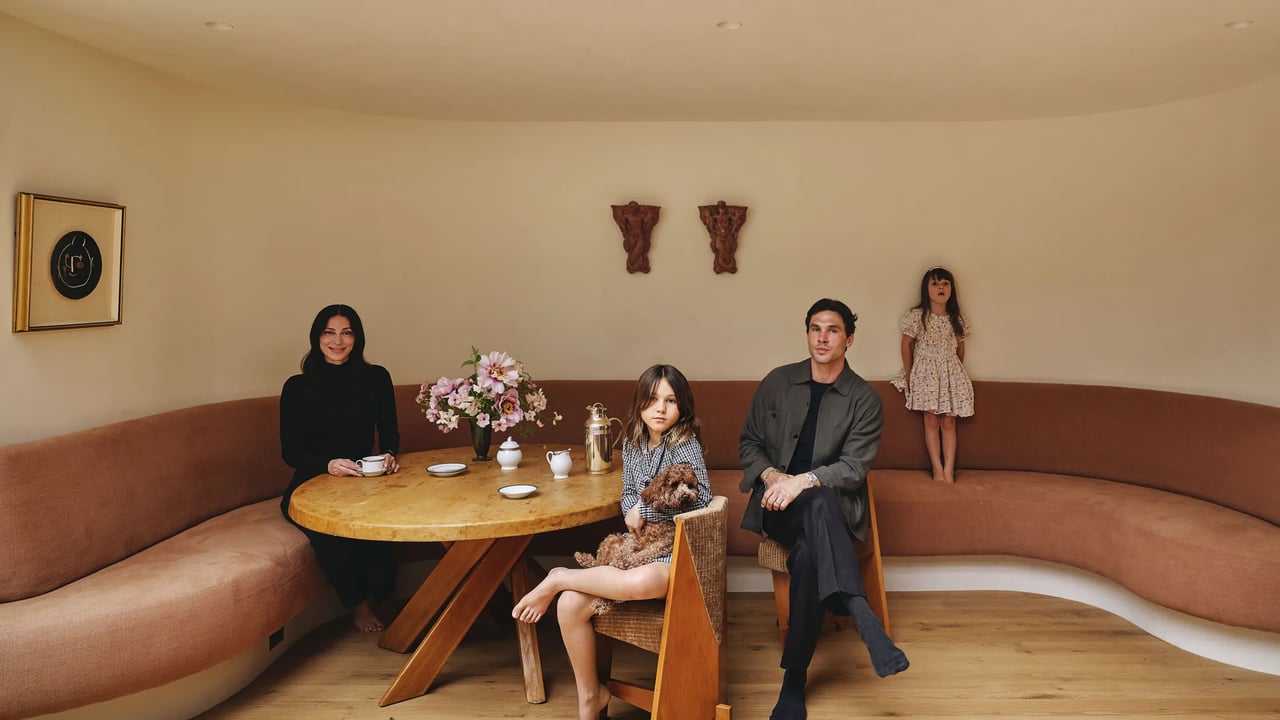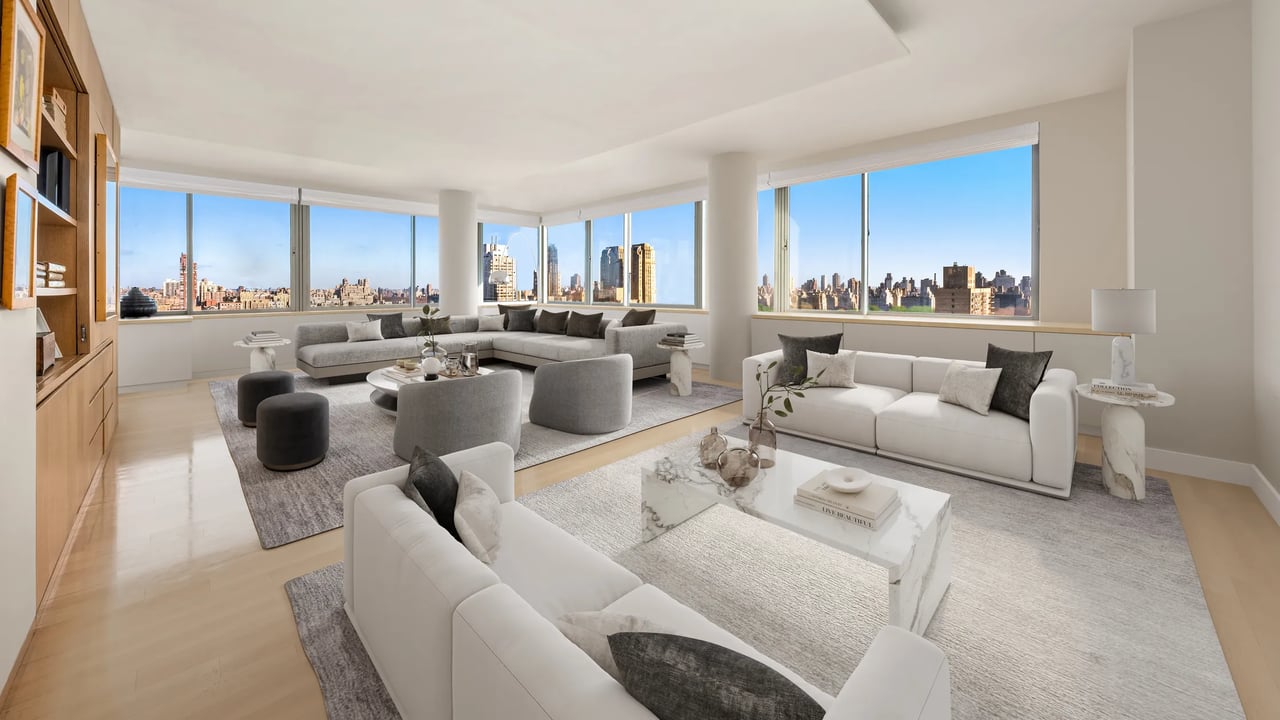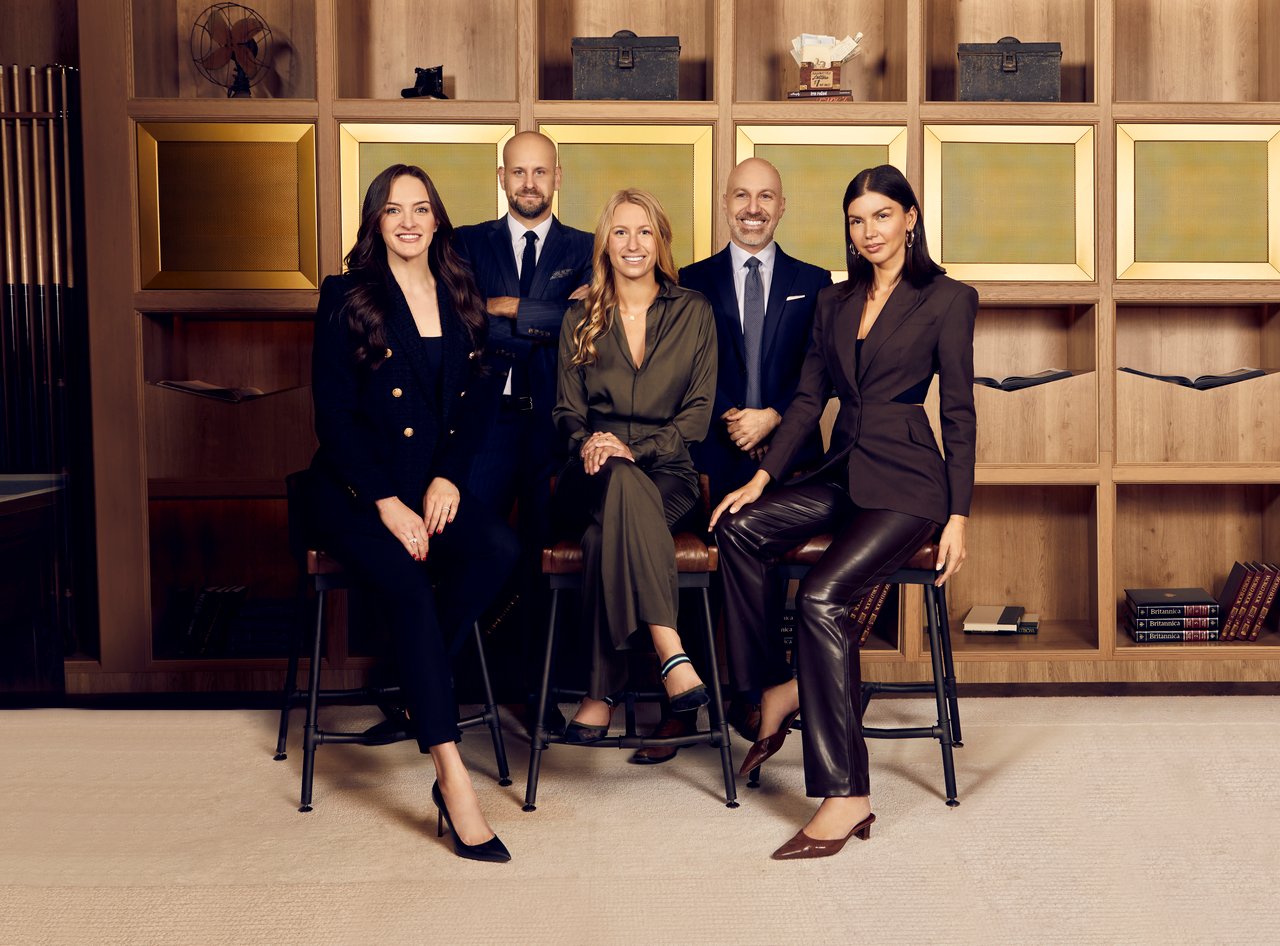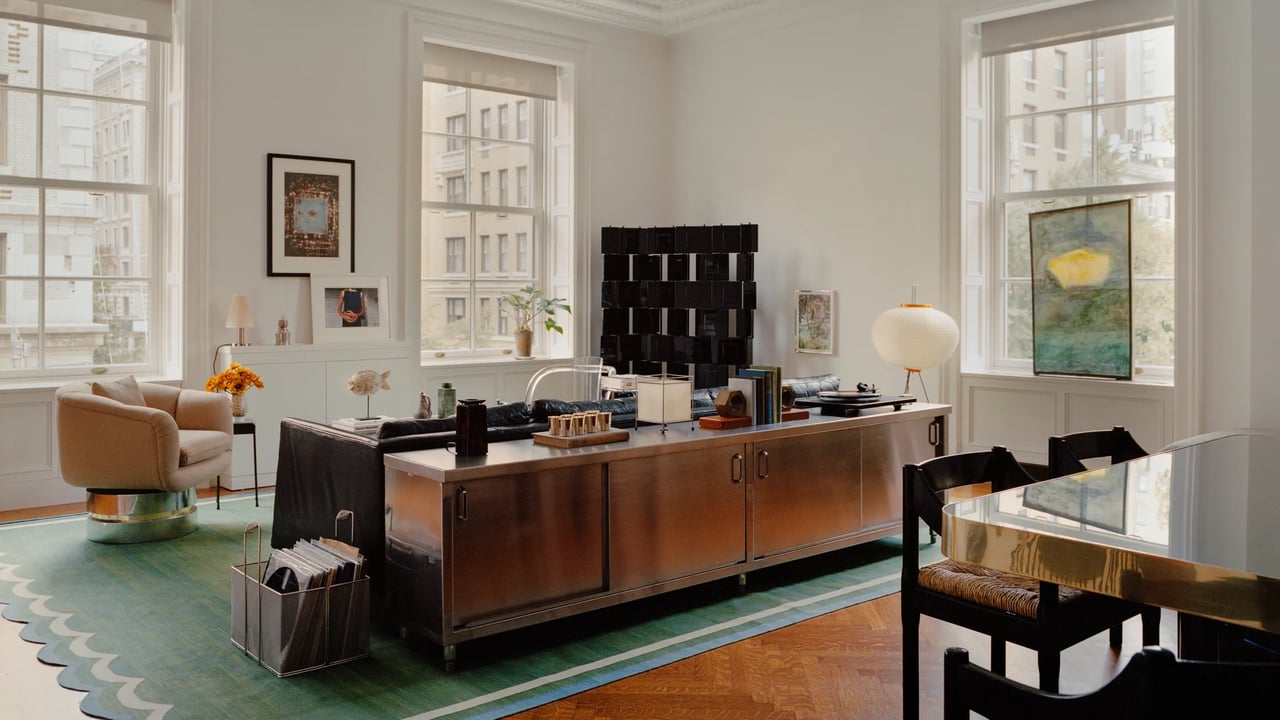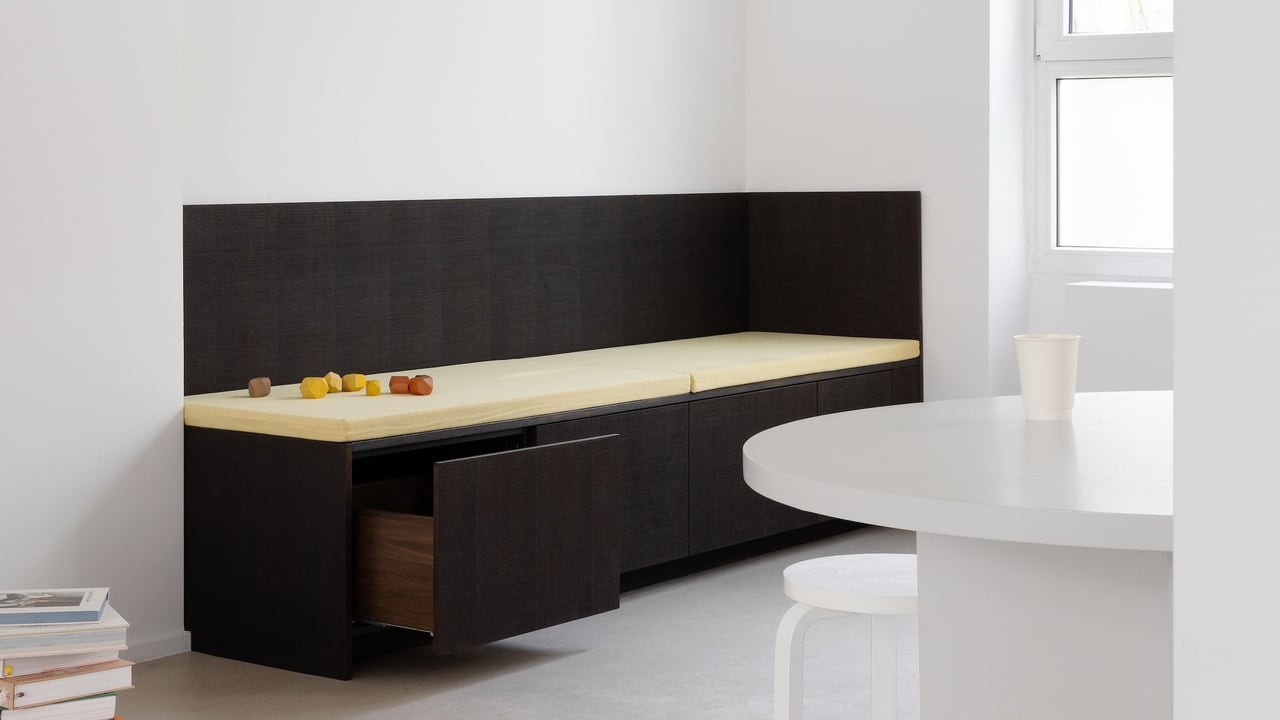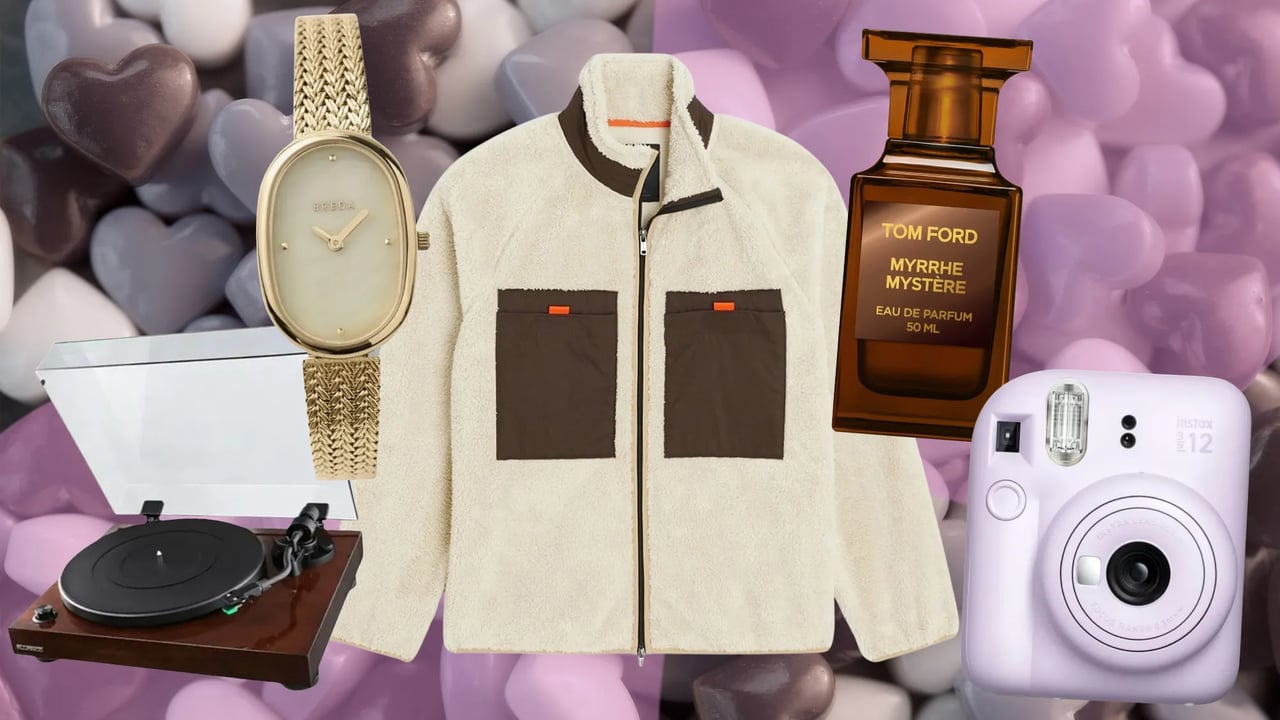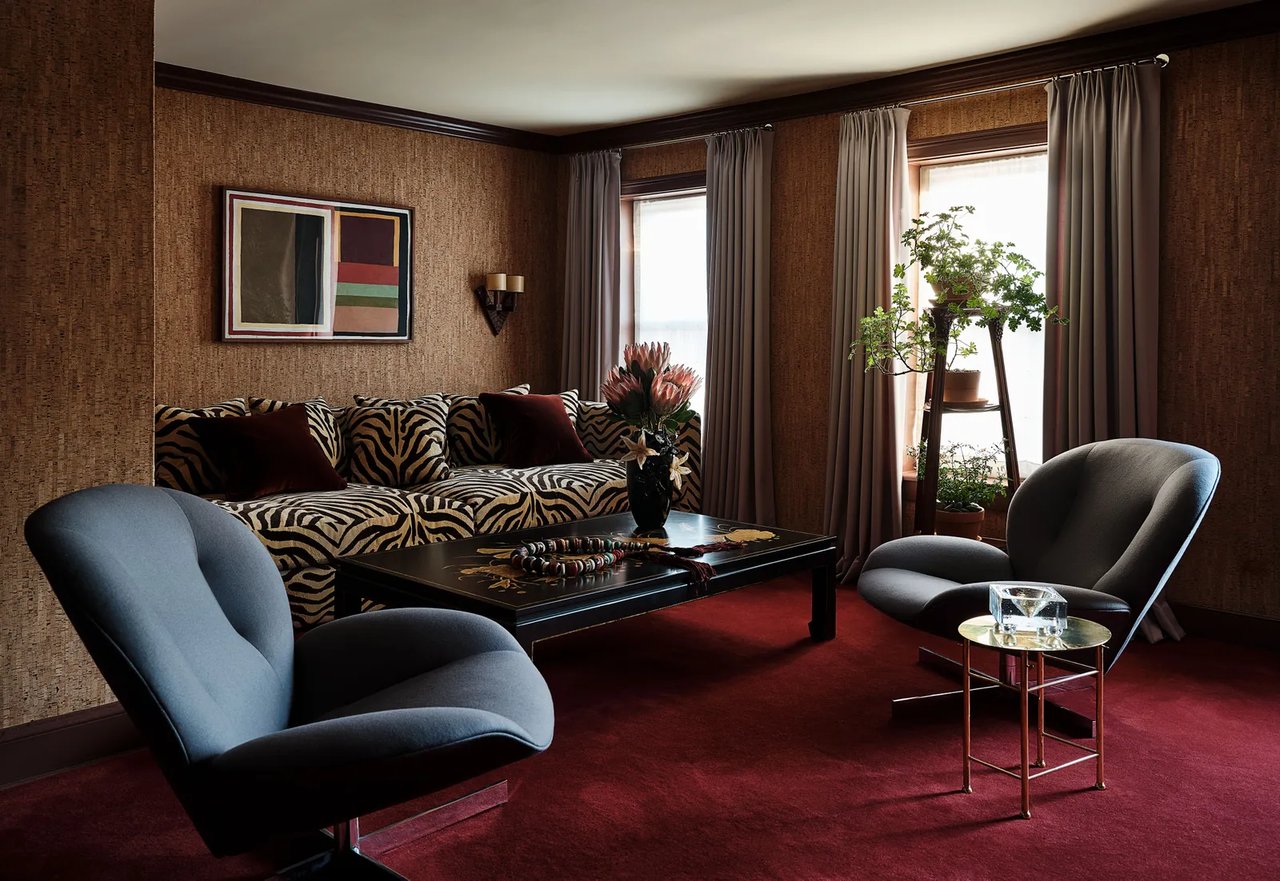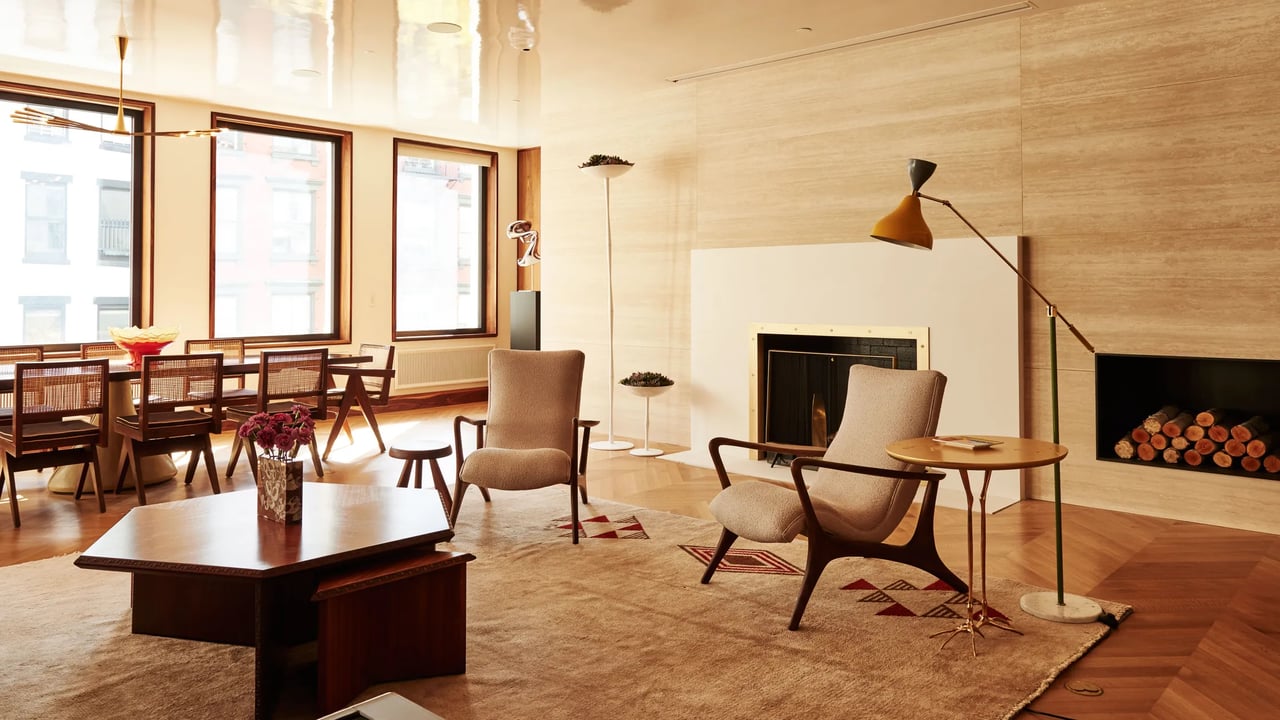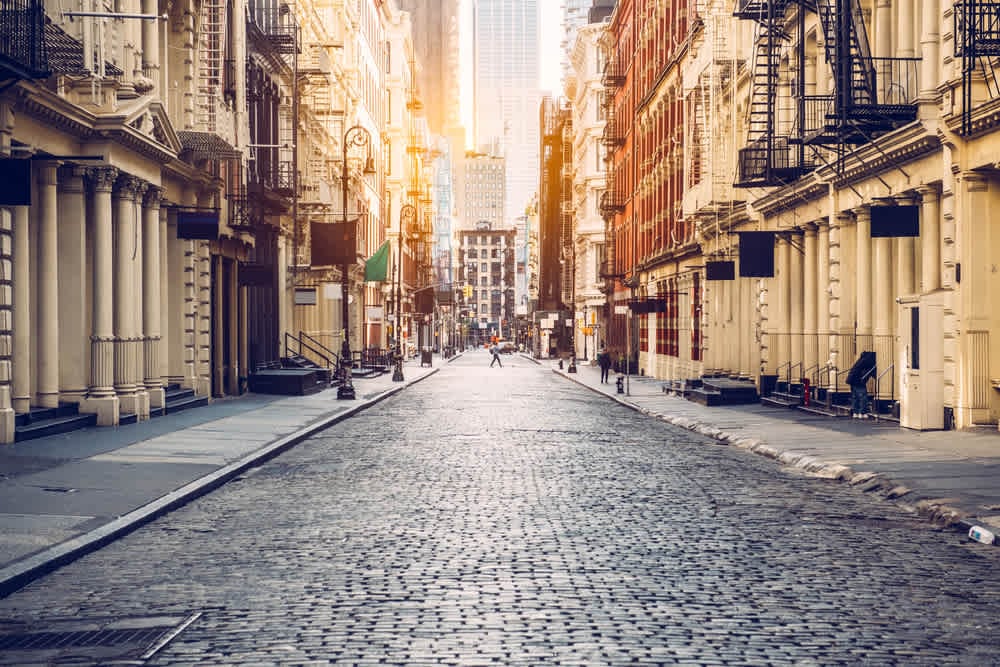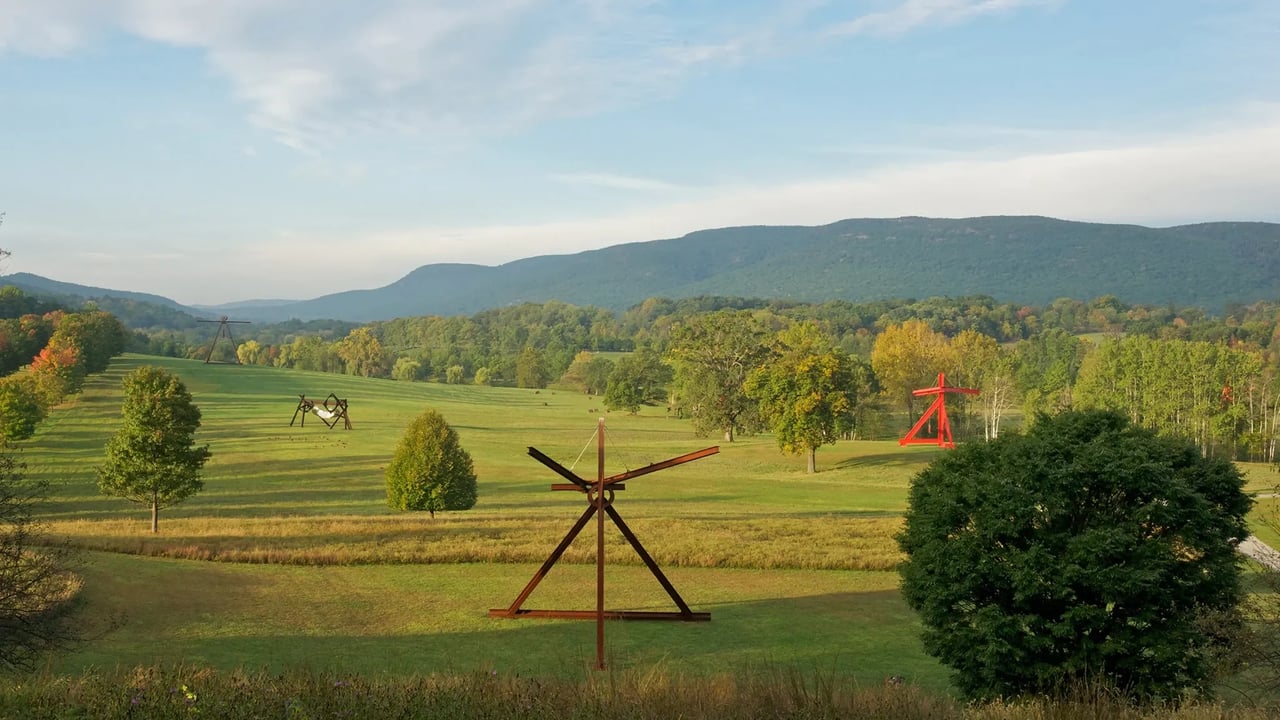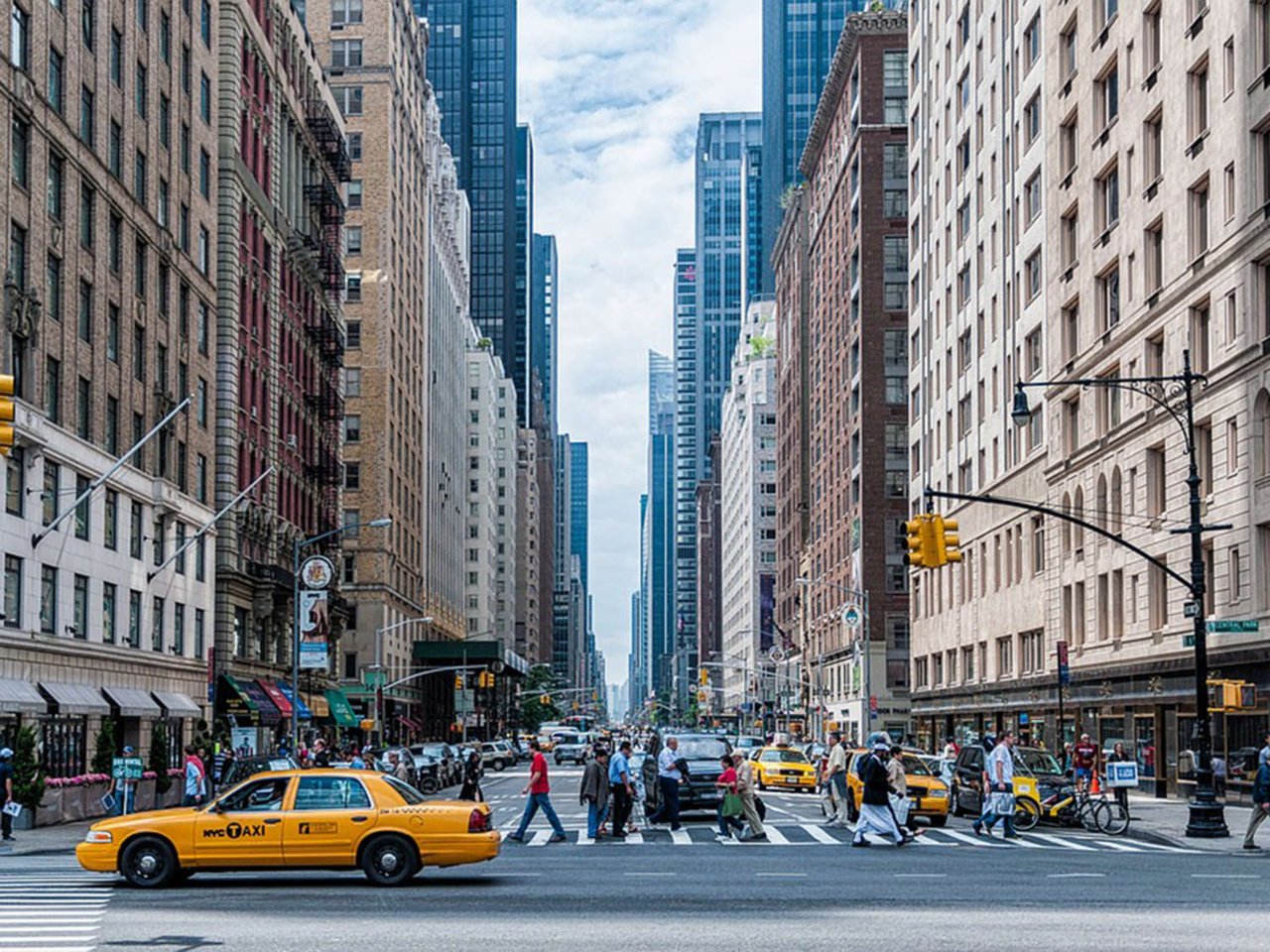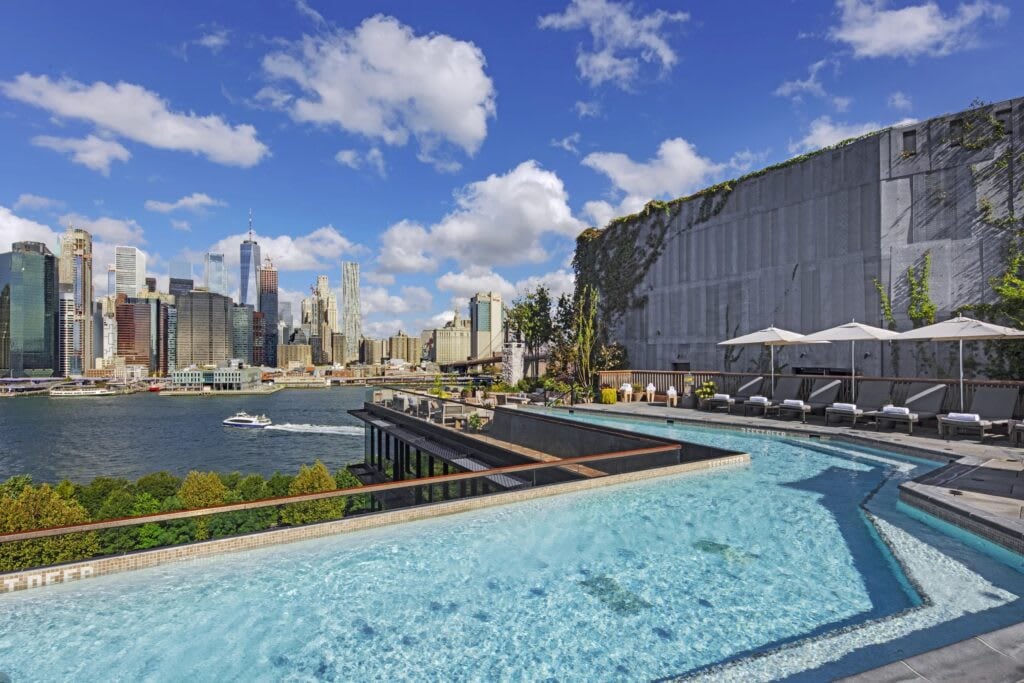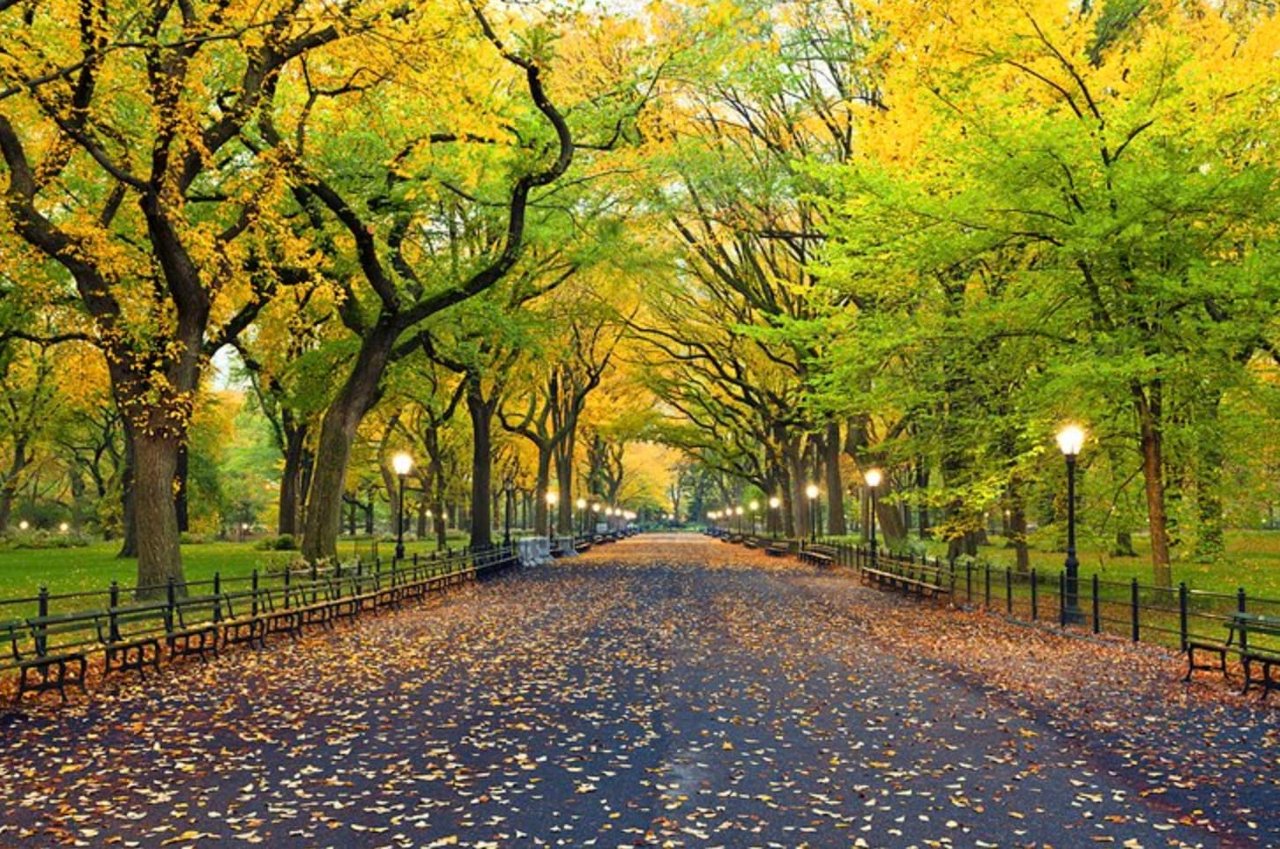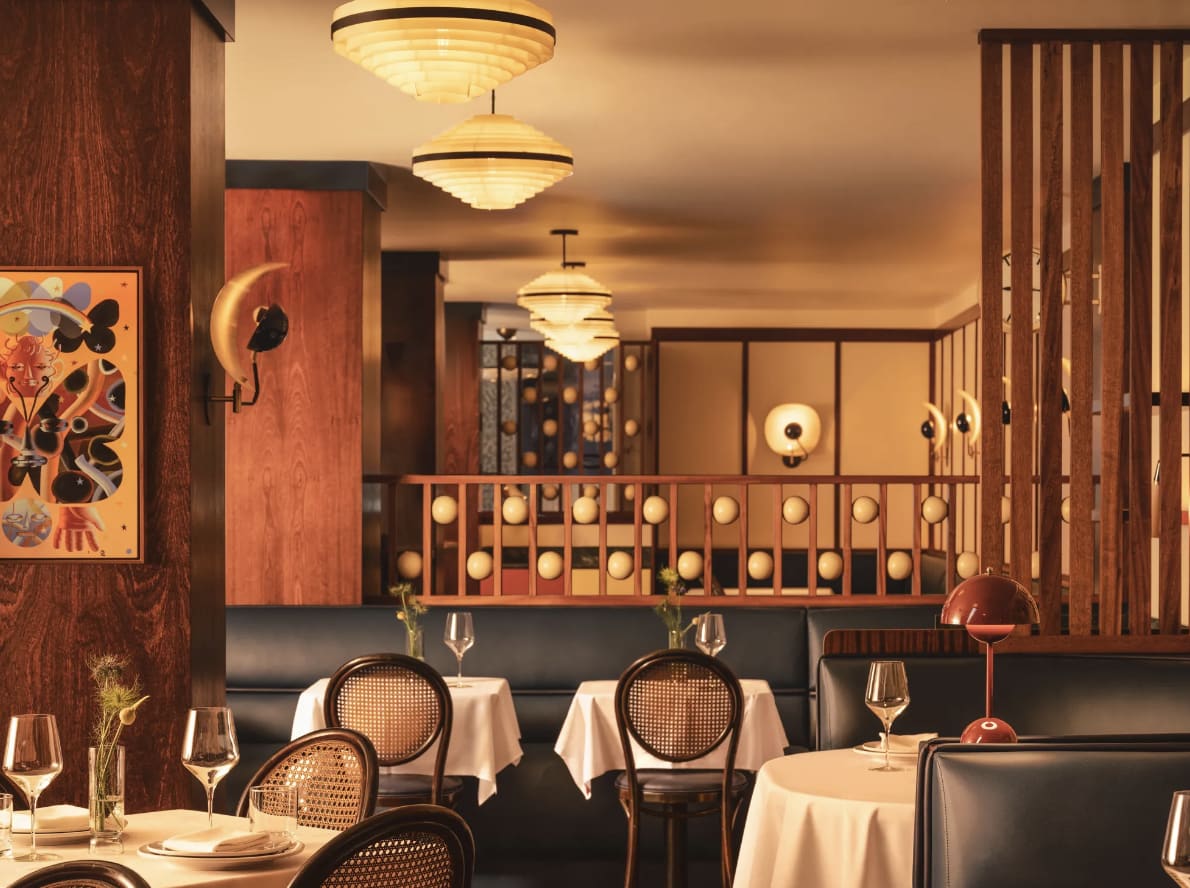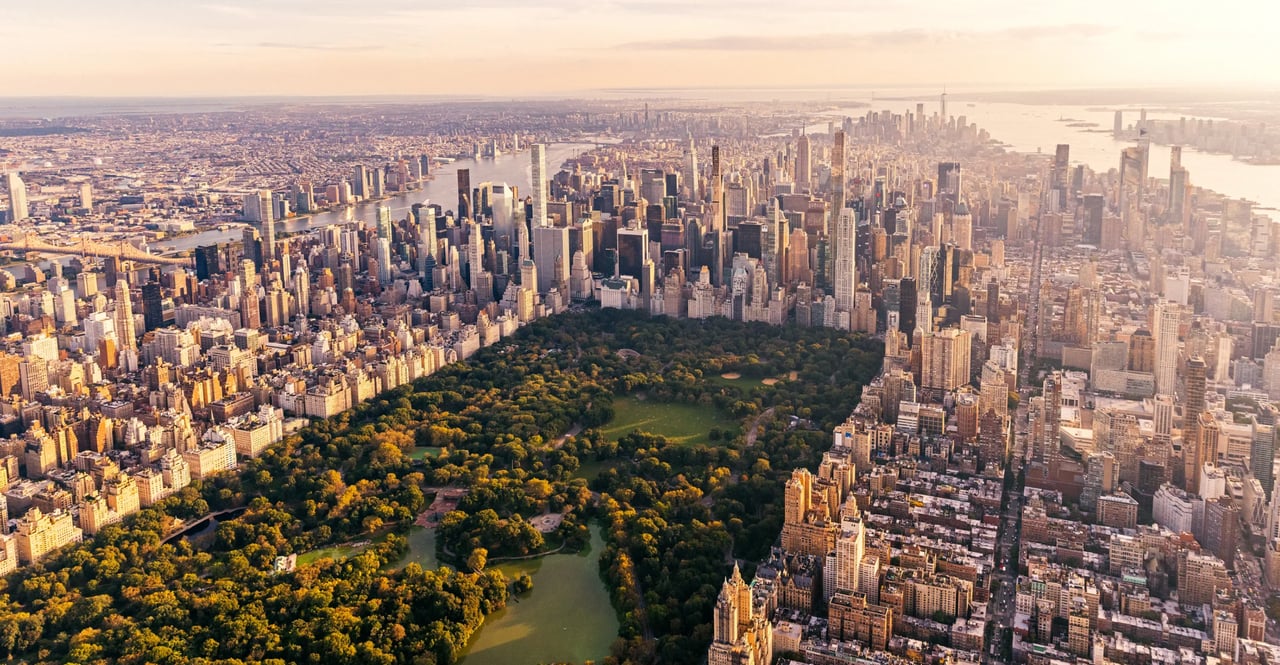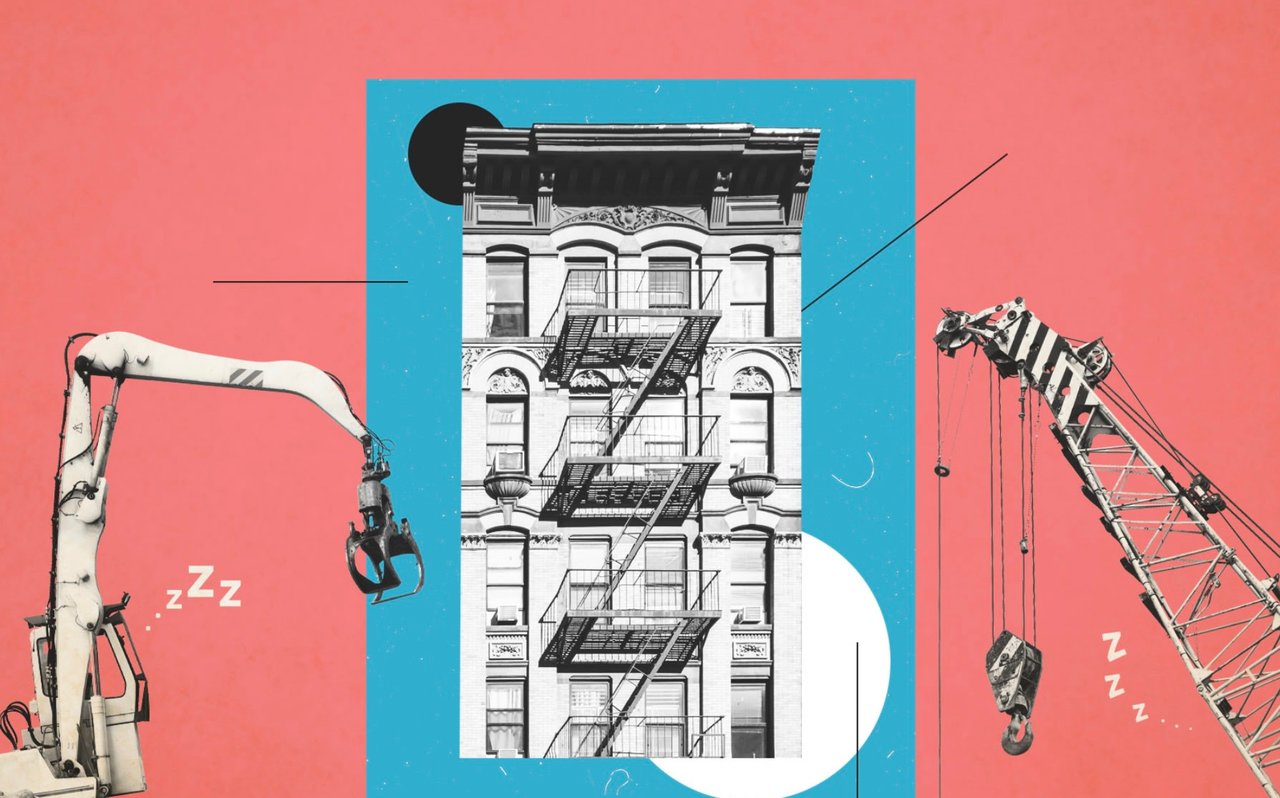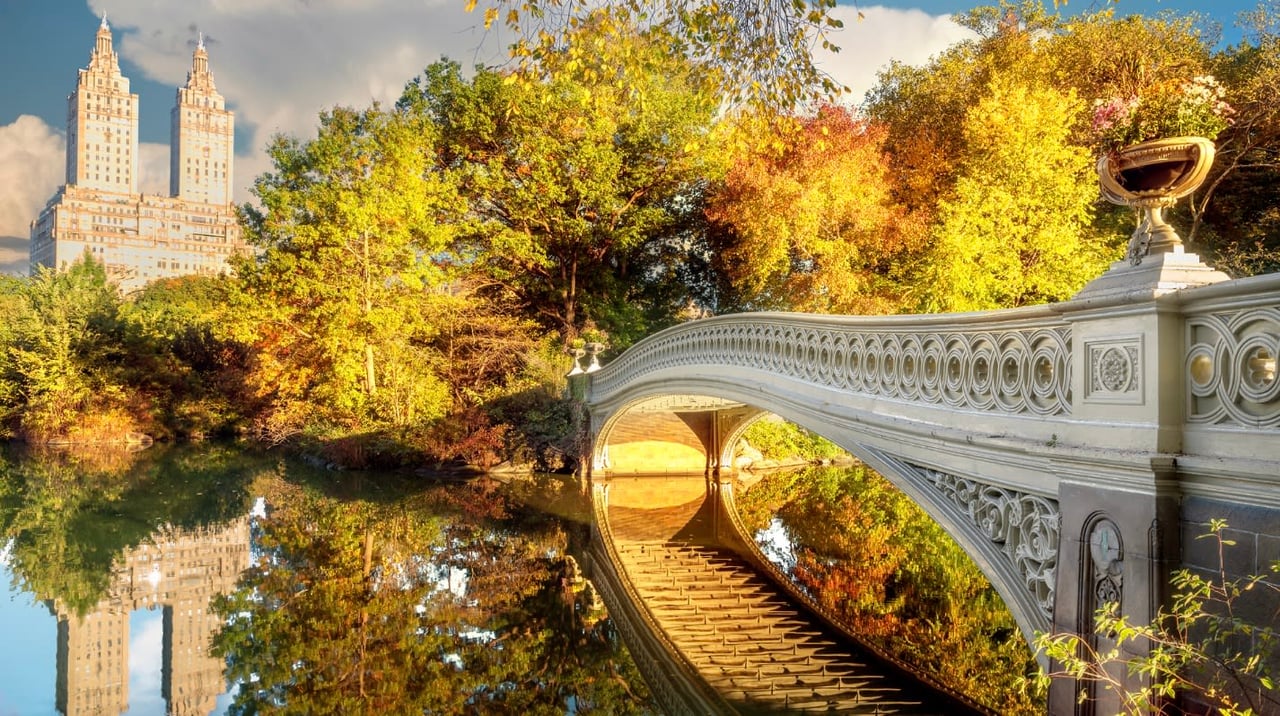WHEN THE ARTISTS Rashid Johnson and Sheree Hovsepian bought their home near Gramercy Park in 2020, it was a longstanding shrine to rock ’n’ roll glory. On a gracious Manhattan block shielded by a canopy of Bradford pear trees, the five-story, almost 24-foot-wide townhouse, built in 1910 and reimagined by the architect Rosario Candela in 1919, had been owned for three decades by Ric Ocasek, the late co-founder and lead singer of the Cars, and his wife, the model Paulina Porizkova. There was cheetah-print carpeting, tall potted palms and bathrooms with mirrored walls and black lacquer. Four years in, Johnson, 46, and Hovsepian, 49, who live with their 12-year-old son, Julius, and a dog named Bruno, have transformed the 5,800-square-foot space — with its vast 20-foot-tall living room and wall of casement windows that open onto a back garden — into a radically different sort of sanctuary. “Art is the center of our approach to everything,” says Johnson. “That’s where we put our energy.”
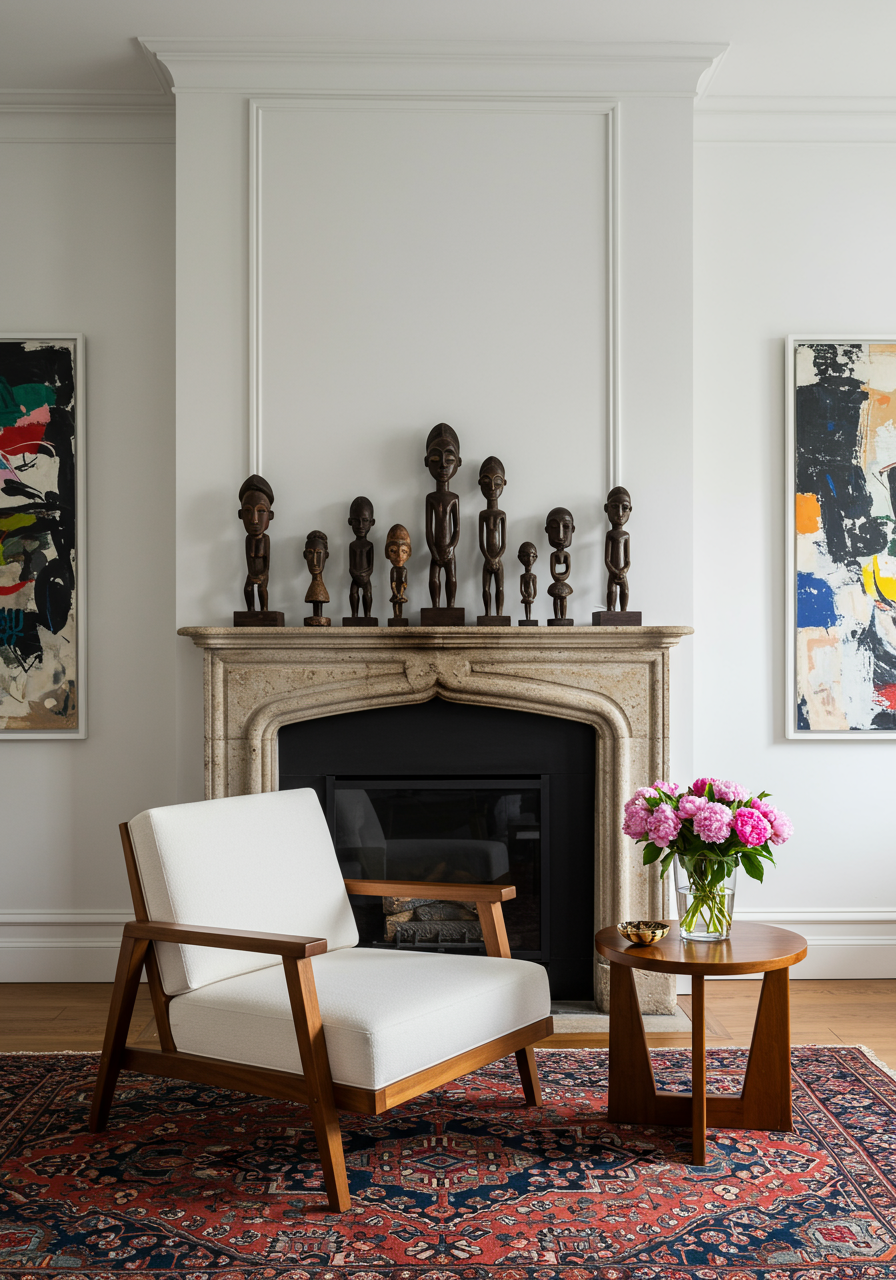
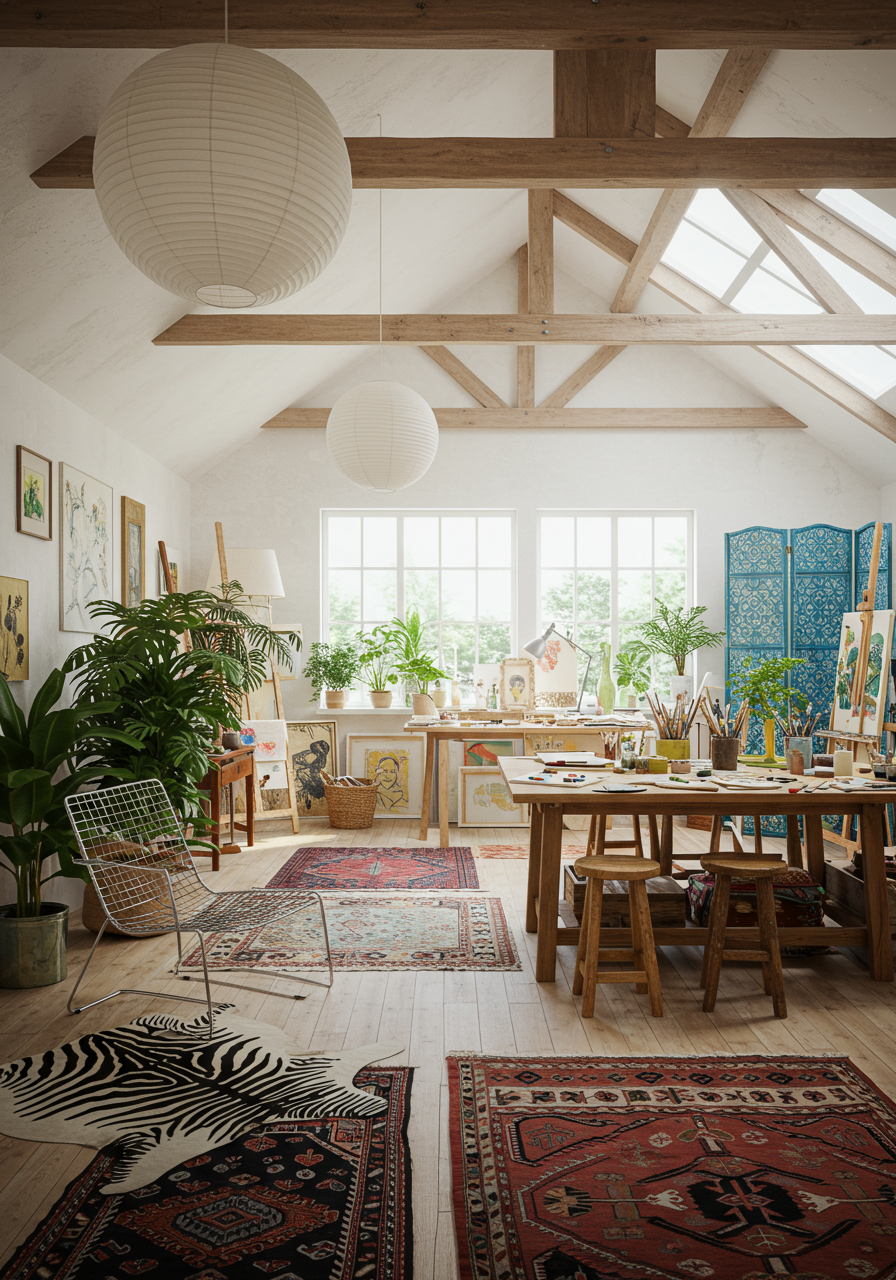
Hovsepian, who was born in Isfahan, Iran, and grew up in Toledo, Ohio, makes allusive, shadowy photographs and assemblages that are in the permanent collections of New York’s Solomon R. Guggenheim Museum and the Art Institute of Chicago. Johnson, who was born in Evanston, Ill., and raised between there and Chicago, has been a dominant force in visual culture since the turn of the millennium, when, at 23, he was included in the seminal 2001 “Freestyle” show at the Studio Museum in Harlem. His multidisciplinary body of work ranges from large, looping abstract paintings thrumming with existential anxiety to room-size steel scaffolding enclosures stacked with tropical plants, shea butter sculptures, patterned rugs and, for a 2016 show at one of Hauser & Wirth’s New York galleries, an upright piano played daily by a classically trained musician. His recent fractured and frenzied giant mosaics — composed of ceramic, mirror shards, wood and other materials — can be seen at the Metropolitan Opera and La Guardia Airport.
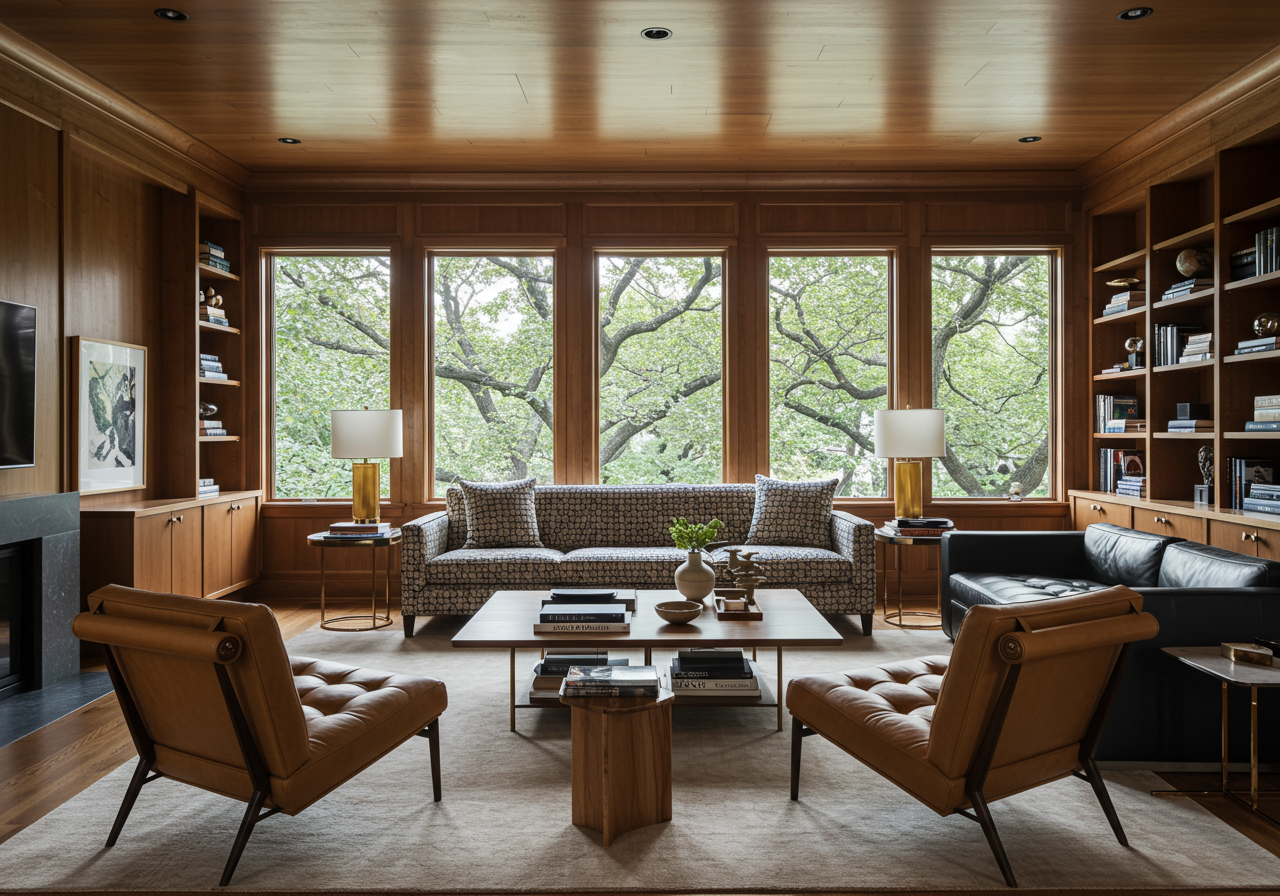
But the couple’s commitment to art extends beyond their own practices. They’re known for supporting emerging talents and bringing attention to older Black artists who’ve not gotten their due. And their taste in design moves fluidly through cultures and eras — from the polished flair of Brazilian Modernism to the epic proportions of Venice’s art-filled palazzos. With the help of the designer Ariel Ashe and the architect Reinaldo Leandro, a duo known for their bold, graphic aesthetic, they’ve created interiors that are equal parts provocation and celebration. Collecting, Johnson says, is “my way to unpack my relationship with history through objects.”
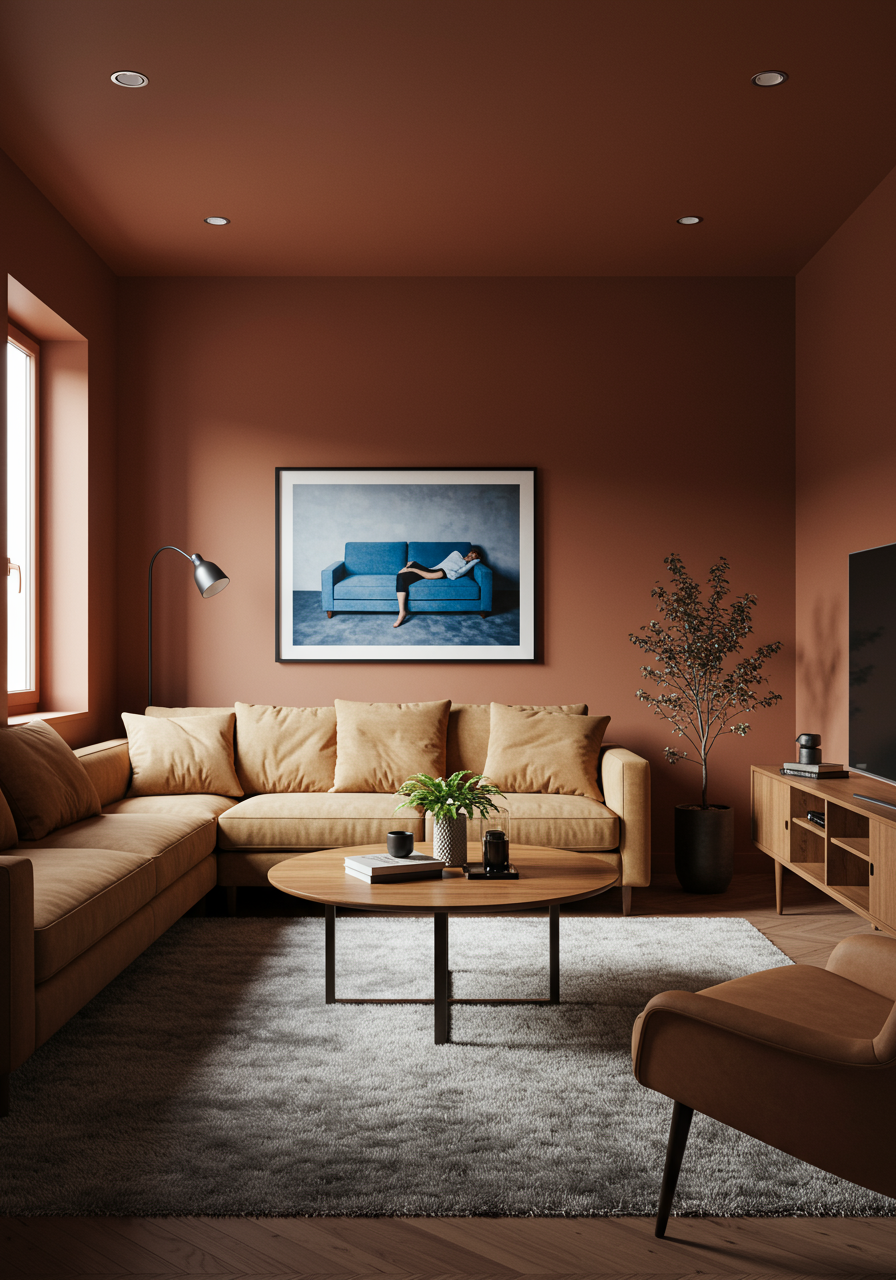
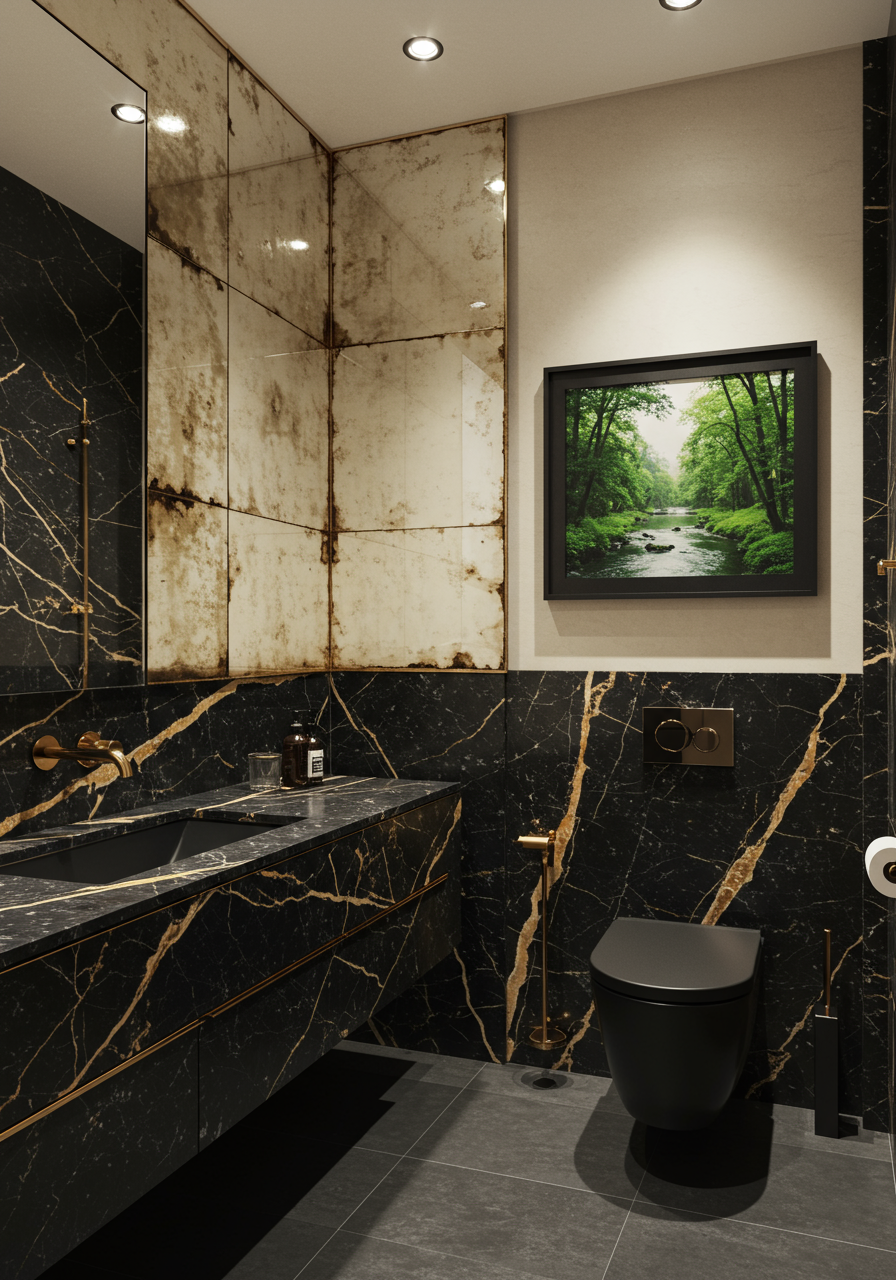
The couple’s bond with the design studio, known as Ashe Leandro, was forged more than 15 years ago, when both the designers and the artists were establishing themselves in New York. Leandro, now 45, bought two small works by Johnson from an early show; five years later, with the artist’s career taking off, he and Hovsepian asked them to reimagine their Kips Bay townhouse, where the couple lived before moving to Gramercy, as well as three successive Long Island homes. “It makes a difference if you really come up with someone,” says Ashe, 44. “When we first worked with them, we were trying to save money while being original, and there were a lot of constraints. Now, as Rashid has gotten bigger and bolder, we can be bigger and bolder, too.”
THE 34-FOOT-LONG MAIN room, as capacious as a Chelsea gallery, is approached through a creamy plaster arched entry hall crowned with a photo collage by Hovsepian; the lack of ornament was meant to emphasize the space’s most dramatic feature: a reclaimed 18th-century coffered ceiling from Sicily. “In a room like that, you need to find some way to draw the eye up,” says Ashe. A 1940s Steinway grand piano, which Julius plays, sits near a monumental limestone hearth recovered from a late 18th-century French chateau; some African statuettes and masks, which Johnson has been collecting for decades, line the mantel. A spiraling 2004 aluminum sculpture by Louise Bourgeois — a motif in her work partly inspired by her childhood dream of wringing the neck of her father’s mistress — hangs over a 1960 dining table by the Polish Brazilian midcentury architect Jorge Zalszupin. In a seating area nearby, there’s a George Nakashima coffee table in front of a snaking custom sofa covered in burnt yellow mohair and a polished rosewood Zalszupin chair; a 1951 canvas by the Abstract Expressionist Adolph Gottlieb; and a nearly 11-foot-tall gold-leafed bronze totem by the New York-based sculptor Simone Leigh.
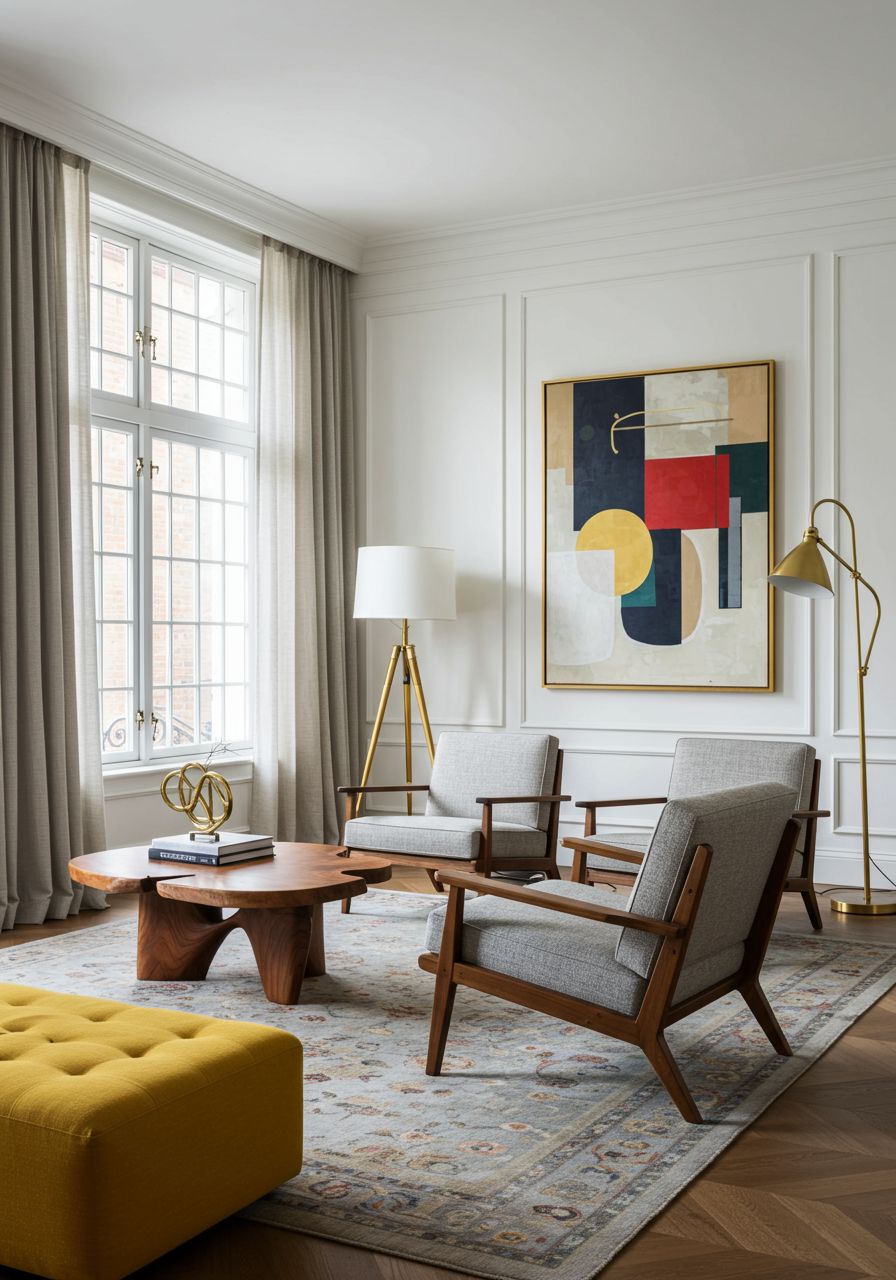
On the mezzanine, which has three soaring curved openings that overlook the space, there’s a wood-paneled library with a brown leather sofa and a black-and-white shaggy geometric rug. The shelves hold ceramics and small works by the German sculptor Isa Genzken and the American artists Pope.L and Lawrence Weiner. A compact painting by the Kentucky-born artist Bob Thompson — a major influence on Johnson — adorns one wall, while on another is a cartoonish Philip Guston painting depicting members of the Ku Klux Klan. “We have a real mix in here,” Johnson says. “I’m African American and Sheree is Iranian. So there’s some Iranian flair, some African influence, some Brazilian Modernism and some European influence. Really, for us, it’s about conjuring a way for all those things to creolize.”
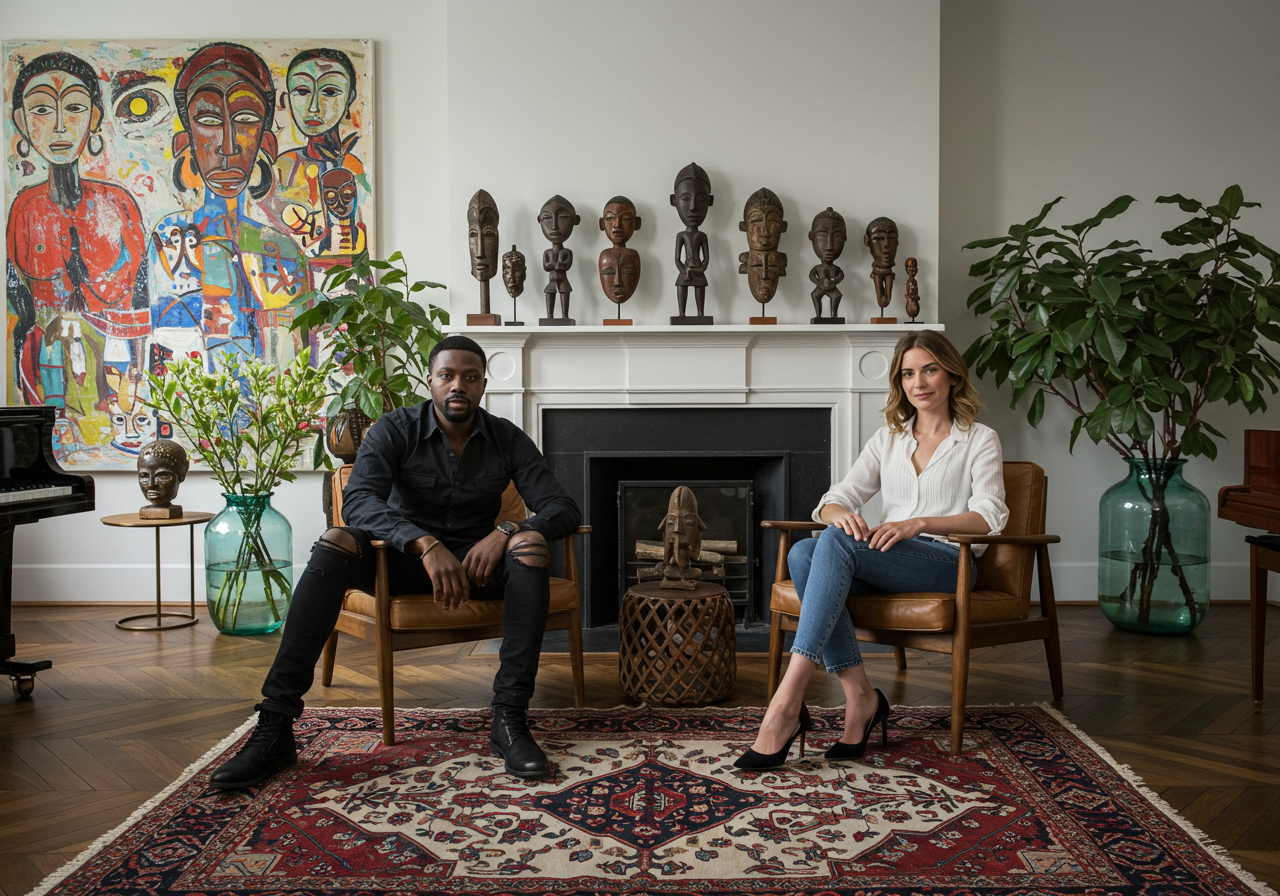
While the public areas are spare, the upstairs rooms veer toward lush hedonism. For Ashe and Leandro, this was fresh territory. “If you look at our work, it’s not usually that decadent,” Ashe says. “But they love a moody room.” Here, the stairs are carpeted in leopard print, a nod to the previous owners. The concept for the primary bedroom was hatched after Johnson and Hovsepian stayed at the ornate Hotel Bauer in Venice while Hovsepian was participating in the 2022 Biennale. “They fell in love with their room and sent us a text raving about it,” says Ashe, “so we tried to evoke that.” The walls are now upholstered in custom gold woven silk jacquard made by the family-owned French company Prelle, with matching window treatments; for a modern juxtaposition, the designers added a shaggy patchwork love seat and a Racket chair by the Brazilian Campana brothers. On one wall, there’s a white plaster sculpture with rounded contours by the British American artist Thomas Houseago, as well as a portrait of Hovsepian by the Los Angeles-based painter Henry Taylor — a companion piece to Taylor’s portrait of Johnson in the burgundy-painted media room.

On the top floor, where Julius reigns, the walls hold brightly colored and kaleidoscopic works by Walter Price and Alteronce Gumby, two young New York-based painters. Unsurprisingly, living with so much art has sparked the boy’s imagination: Johnson jokes that a painted papier-mâché winged animal by their son in the basement entertainment room might be mistaken for a work by the playful Austrian sculptor Franz West. “This,” says Johnson, gesturing with his long arms toward the entirety of the project, with its mix of history, culture and creativity, “is a place for design and failure and experimentation. We’re just people, living in a thing.”
